Explore Atlanta's Neighborhoods
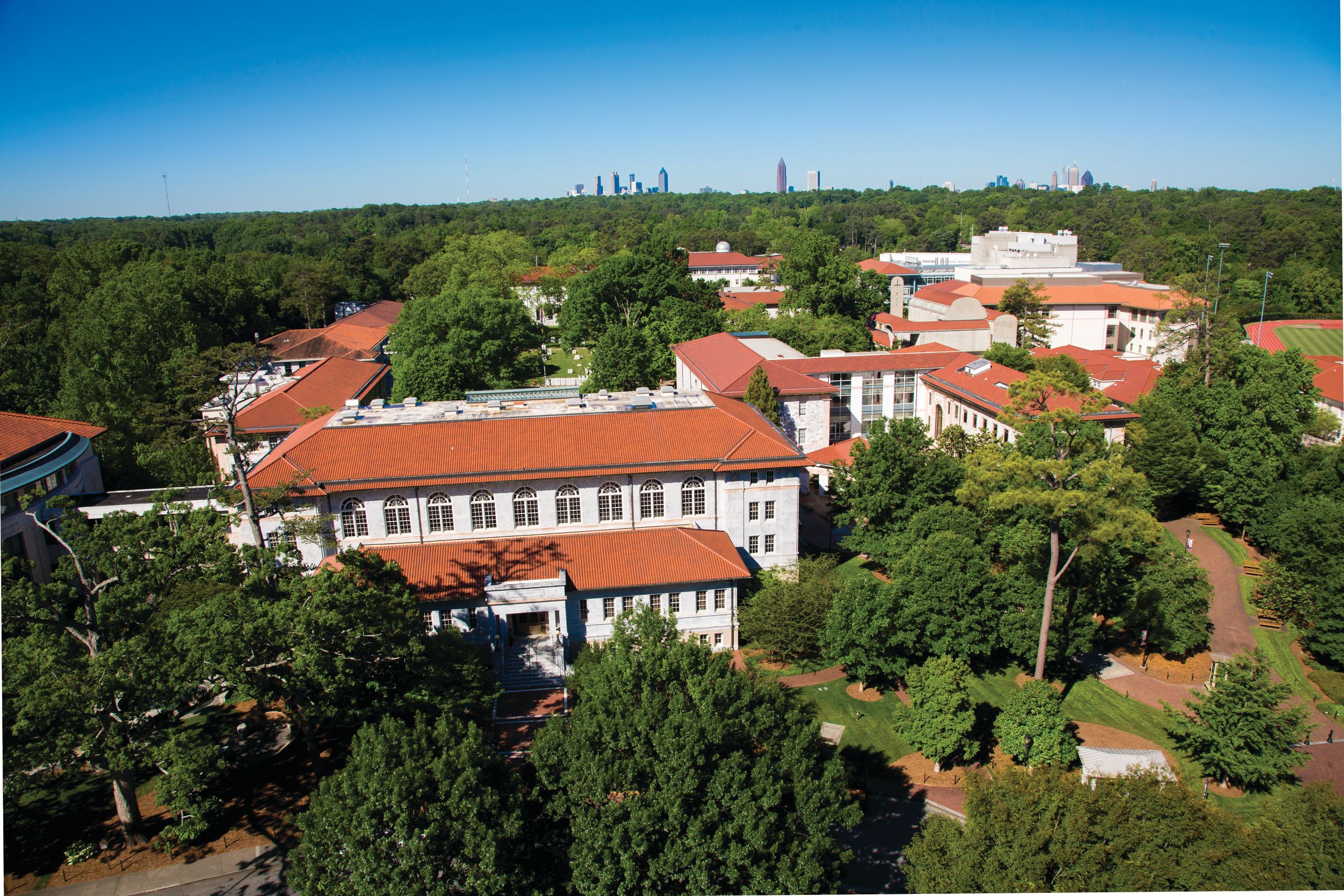
During Welcome Week, all incoming 1L students are assigned to a "House," a community group of peers to provide support throughout your time at Emory Law. Our Houses Program provides students with social opportunities to get to know faculty, staff, and other students.
First-year students are assigned one of eight Houses, which helps them bond and meet 2Ls and 3Ls who can give perspective and realistic advice for navigating law school.
The Houses Program gives students another channel to form relationships that energize their interests, goals, and future paths—and inject fun into law school life.
All of our Houses are named after unique neighborhoods near Emory’s campus. To help you get to know your future home, we thought might enjoy learning about some of their unique characteristics:
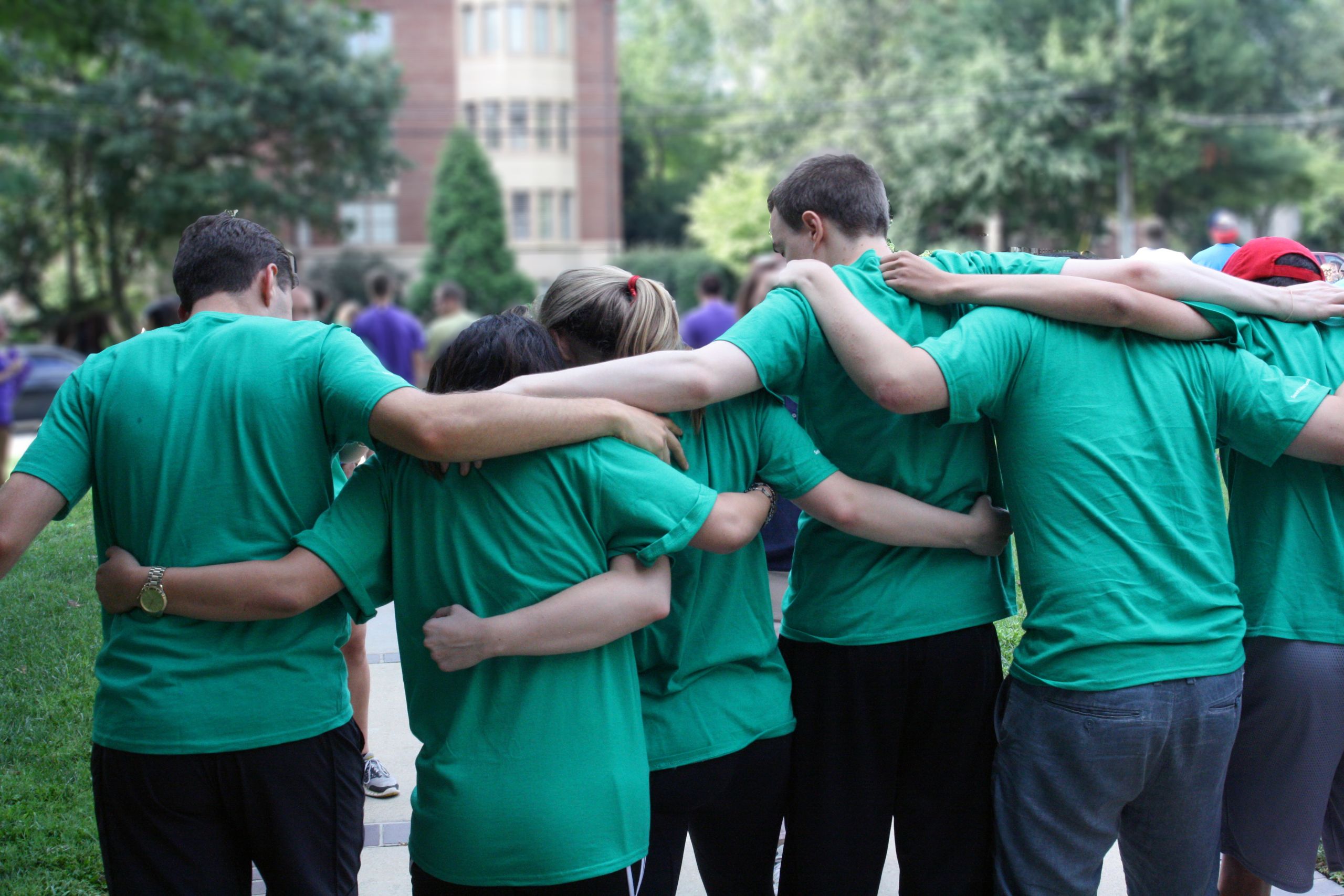
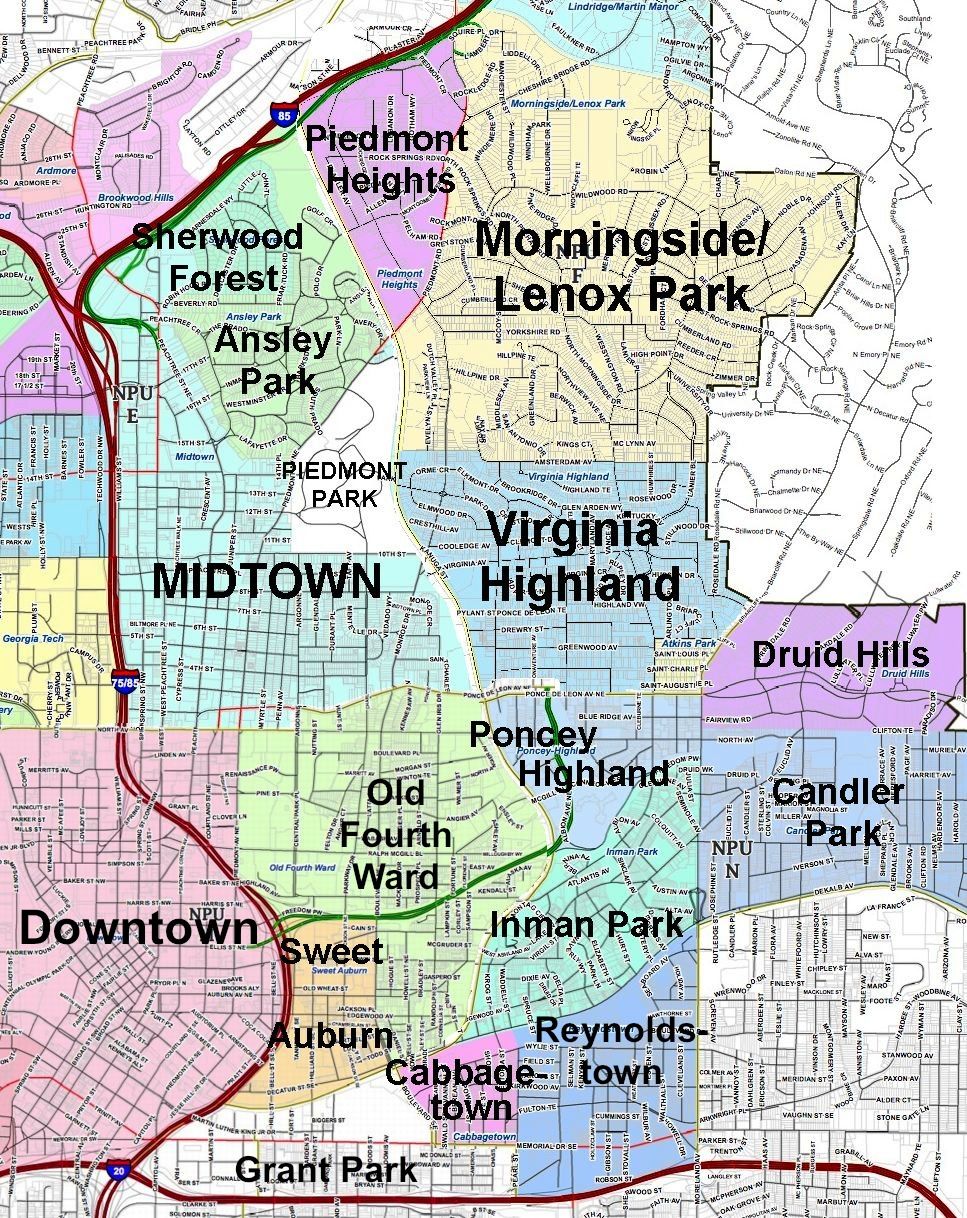
City of Decatur
Located 5 miles from downtown Atlanta and only 2 1/2 miles from Emory, Decatur has a traditional small-town feel with the sophistication and excitement of a college town and the benefits of living close to a metropolitan area.
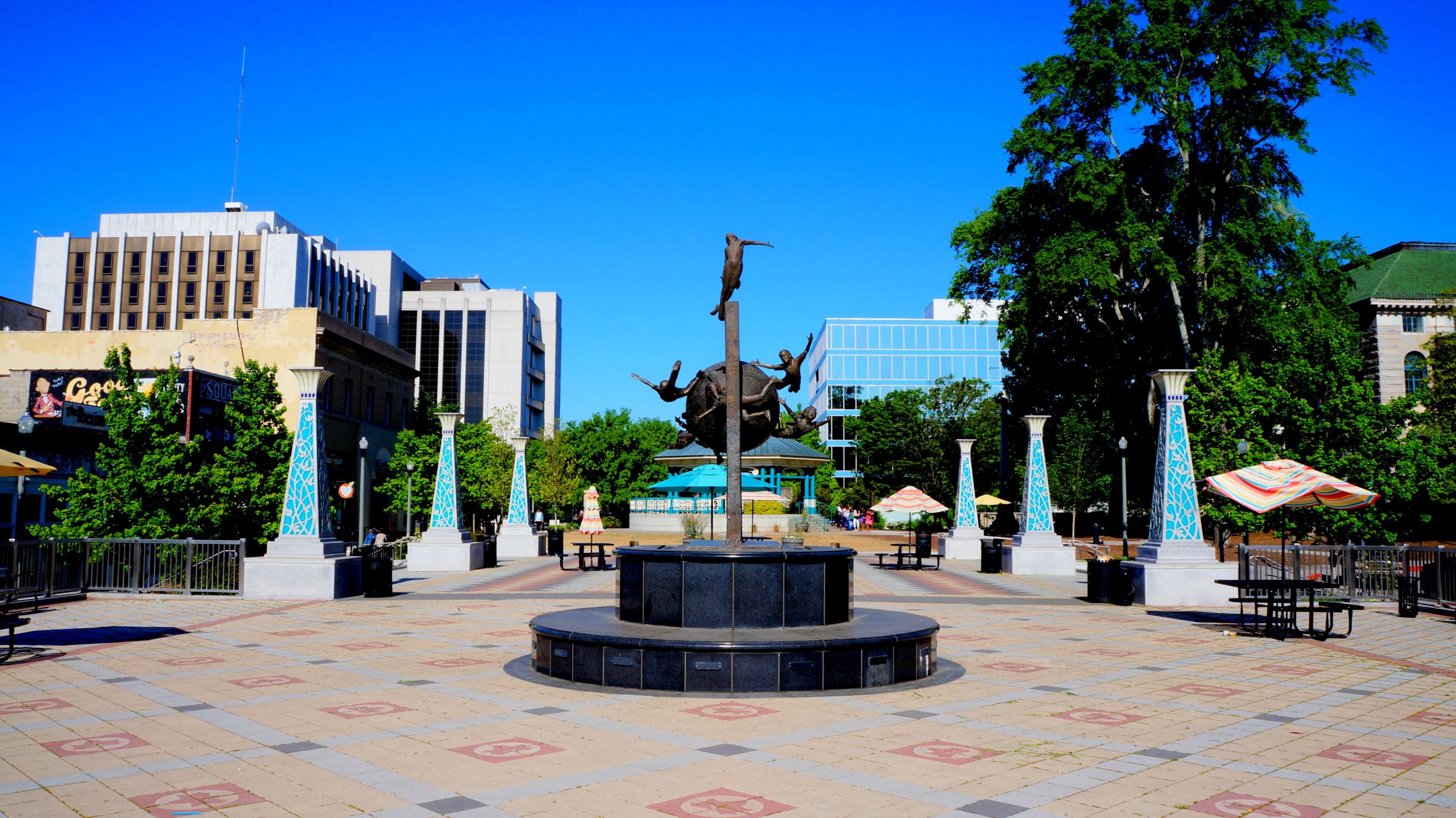
Housing: You’ll find apartments, condos, and single-family homes throughout Decatur, with many examples of the American Craftsman style.
History: Founded in 1822, the city is named after Stephen Decatur, a 19th century U.S. Naval hero.
Activities: For exercise, join the Decatur Running Group, Decatur Hiking Group, or the Third Friday FUN Bike Ride. Each fall, you can attend the Decatur Book Festival, one of the country’s largest independent book festivals or PorchFest, a crowd-sourced, grassroots music festival where neighborhood porches become stages and lawns become venues. Decatur is also the home of Eddie’s Attic, a live music venue for both aspiring and accomplished performing songwriters.
Parks:
· Glenn Creek Nature Preserve: This two-acre bio reserve of native Piedmont Habitat is maintained by neighbors and offers walking trails.
· Hidden Cove Park: a three-acre park perfect for a walk or some quiet time.
Dining: In Decatur Square (accessible by Emory Cliff shuttles or MARTA), you will find a number of restaurants, bars, and shops, including Brick Store Pub, The Iberian Pig, and Kimball House.
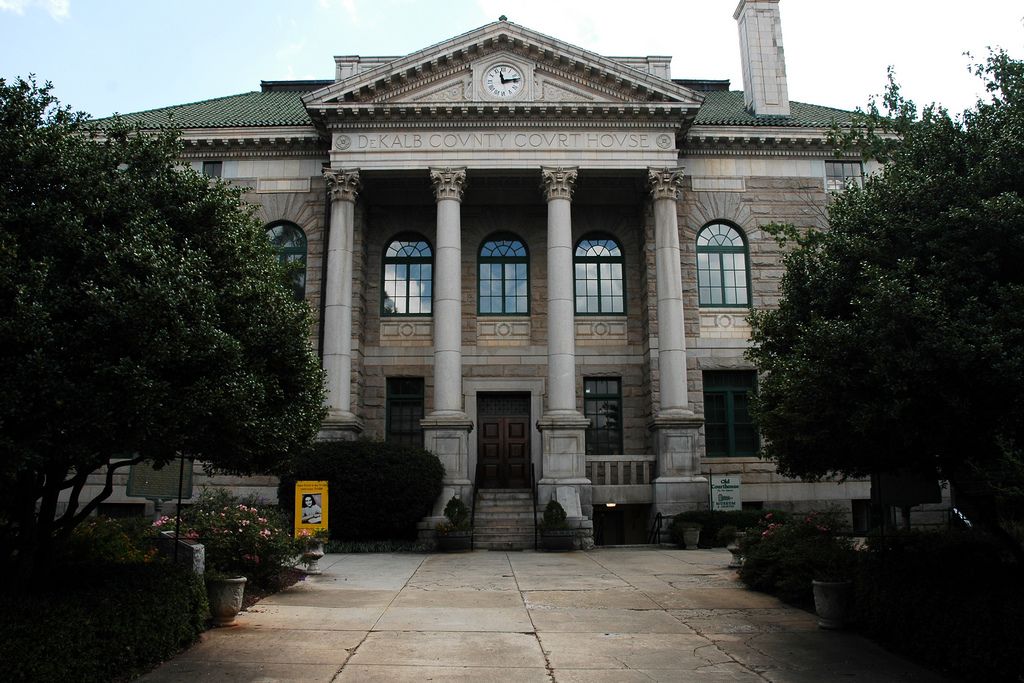
Decatur, GA Courthouse. Photo: Goingstuckey / CC BY-SA (https://creativecommons.org/licenses/by-sa/3.0)
Decatur, GA Courthouse. Photo: Goingstuckey / CC BY-SA (https://creativecommons.org/licenses/by-sa/3.0)

Decatur's downtown historic district. Photo: strixxvaria / CC BY-SA (https://creativecommons.org/licenses/by-sa/3.0)
Decatur's downtown historic district. Photo: strixxvaria / CC BY-SA (https://creativecommons.org/licenses/by-sa/3.0)
Druid Hills
Located about 4 miles from downtown Atlanta and only 2 miles from Emory, this neighborhood has an urban-suburban residential feel.
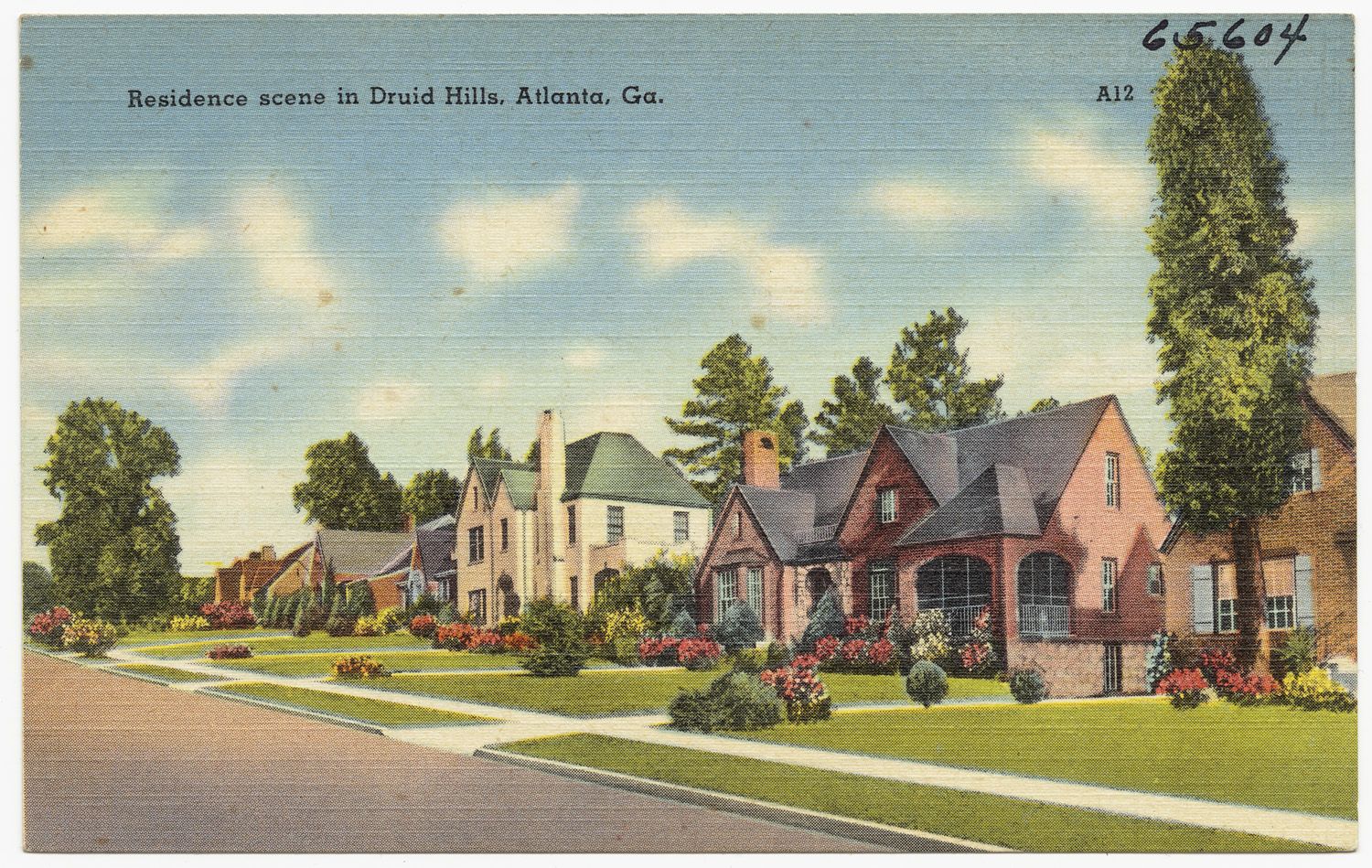
Housing: You’ll find mostly single-family homes in Druid Hills with architectural styles that include Georgian, Tudor, Jacobean, and Italian Renaissance.
History: Druid Hills was designed by Frederick Law Olmsted. A centerpiece of his design, Olmsted Linear Park, is a string of parks along Ponce de Leon Avenue. The neighborhood contains some of Atlanta’s historic late 19th and early 20th century mansions and is listed on the National Register of Historic Places.
Activities: You can take classes or workshops at Callanwolde Fine Arts Center, a non-profit community arts center. Each year, the two-day Spring Festival on Ponce celebrates local arts and crafts on Olmstead Parks, and the civic association hosts an annual homes and gardens tour. Druid Hills is also the home of the Fernbank Museum of Natural History, which hosts IMAX movies and Fernbank After Dark, a science-themed date night held the second Friday of each month.
Parks: Olmsted Linear Park: Six segments of parks encompass 50 acres along Ponce de Leon Avenue.
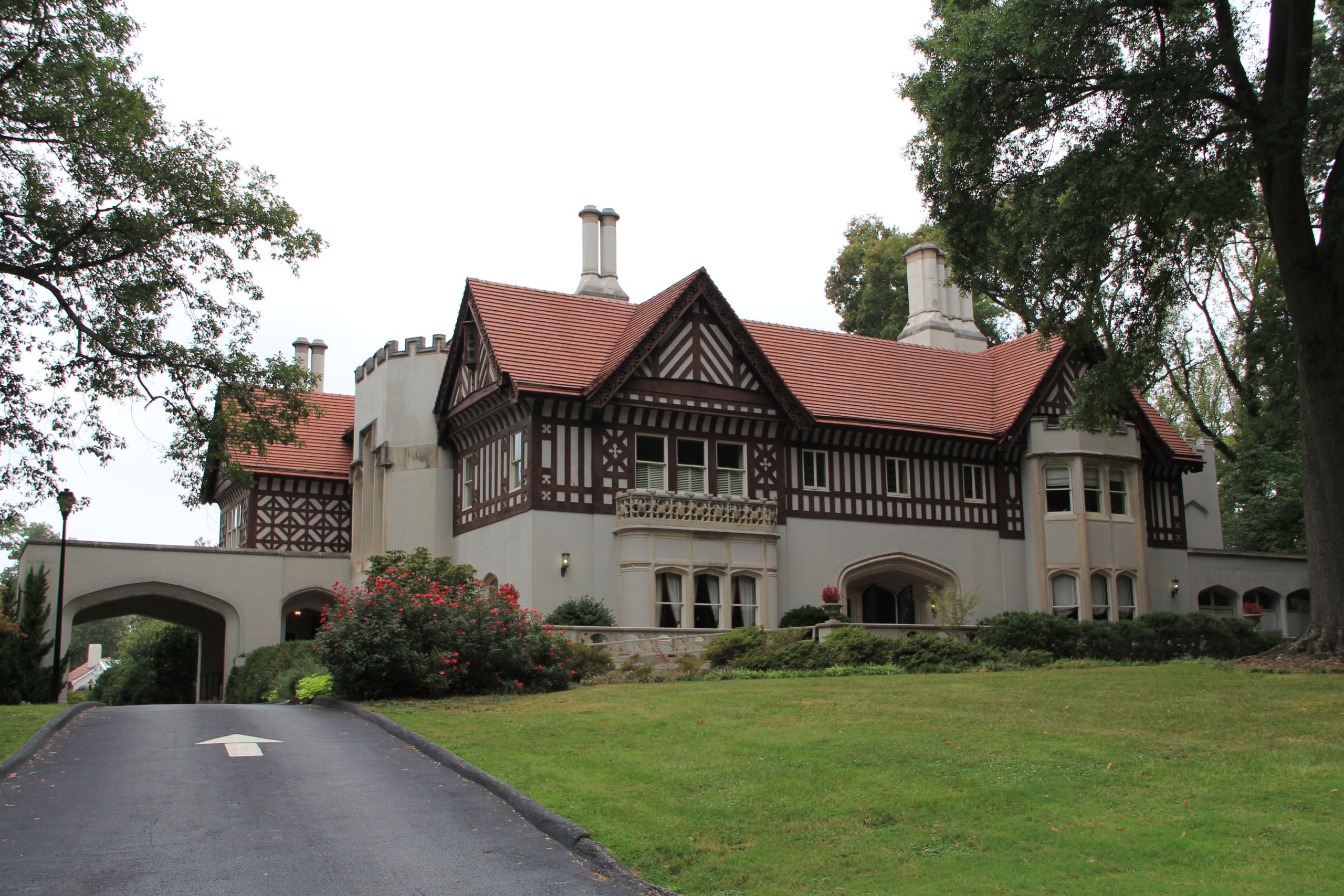
Callanwolde Mansion. Photo: Dawn DeLucia / CC BY-SA (https://creativecommons.org/licenses/by-sa/3.0)
Callanwolde Mansion. Photo: Dawn DeLucia / CC BY-SA (https://creativecommons.org/licenses/by-sa/3.0)
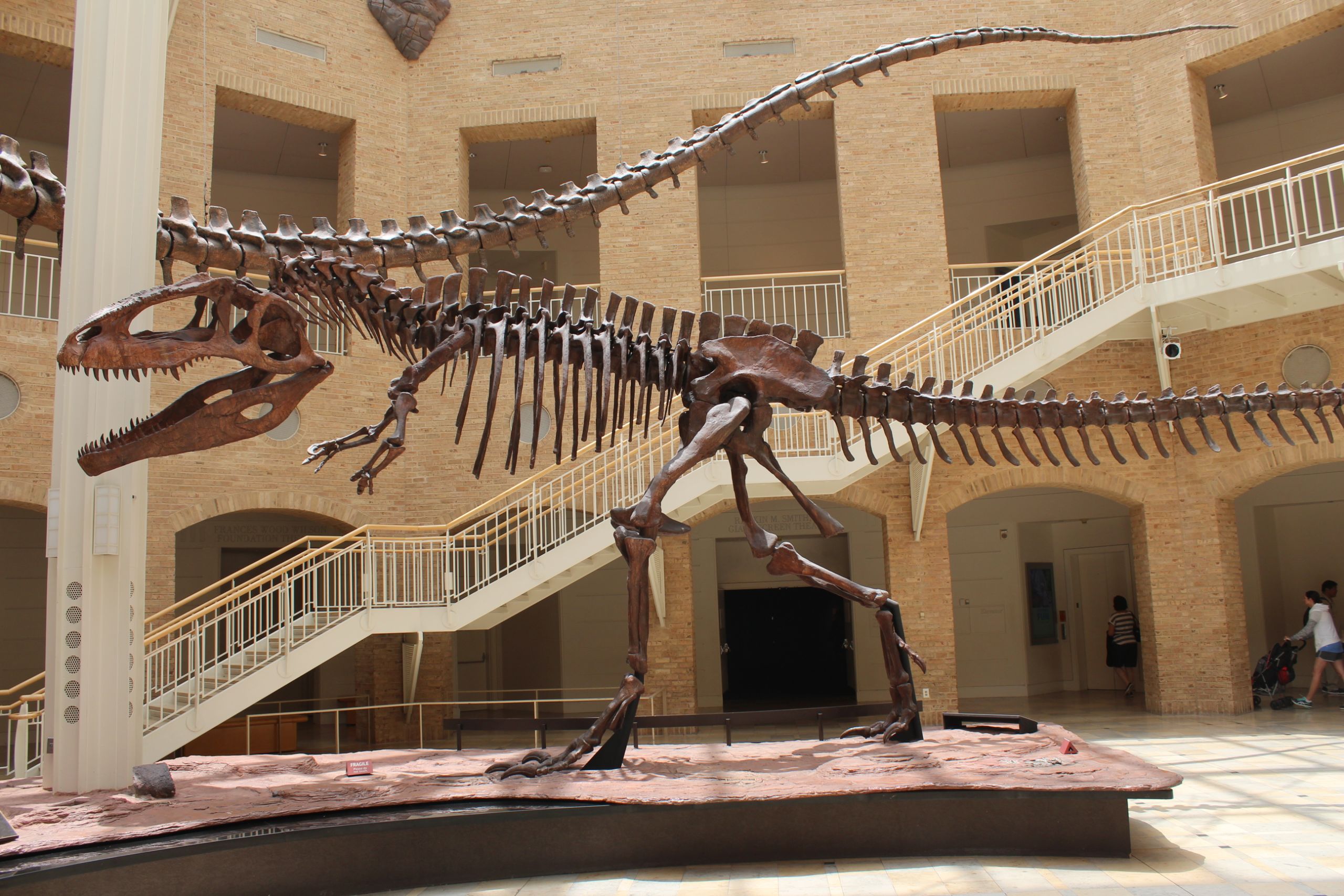
Gigantosaur at Fernbank Museum of Natural History. Photo: Jonathan Chen / CC BY-SA (https://creativecommons.org/licenses/by-sa/4.0)
Gigantosaur at Fernbank Museum of Natural History. Photo: Jonathan Chen / CC BY-SA (https://creativecommons.org/licenses/by-sa/4.0)
Inman Park
Located 2 miles east of downtown Atlanta and about 4 miles from Emory, Inman Park is bordered by the popular BeltLine Eastside Trail.
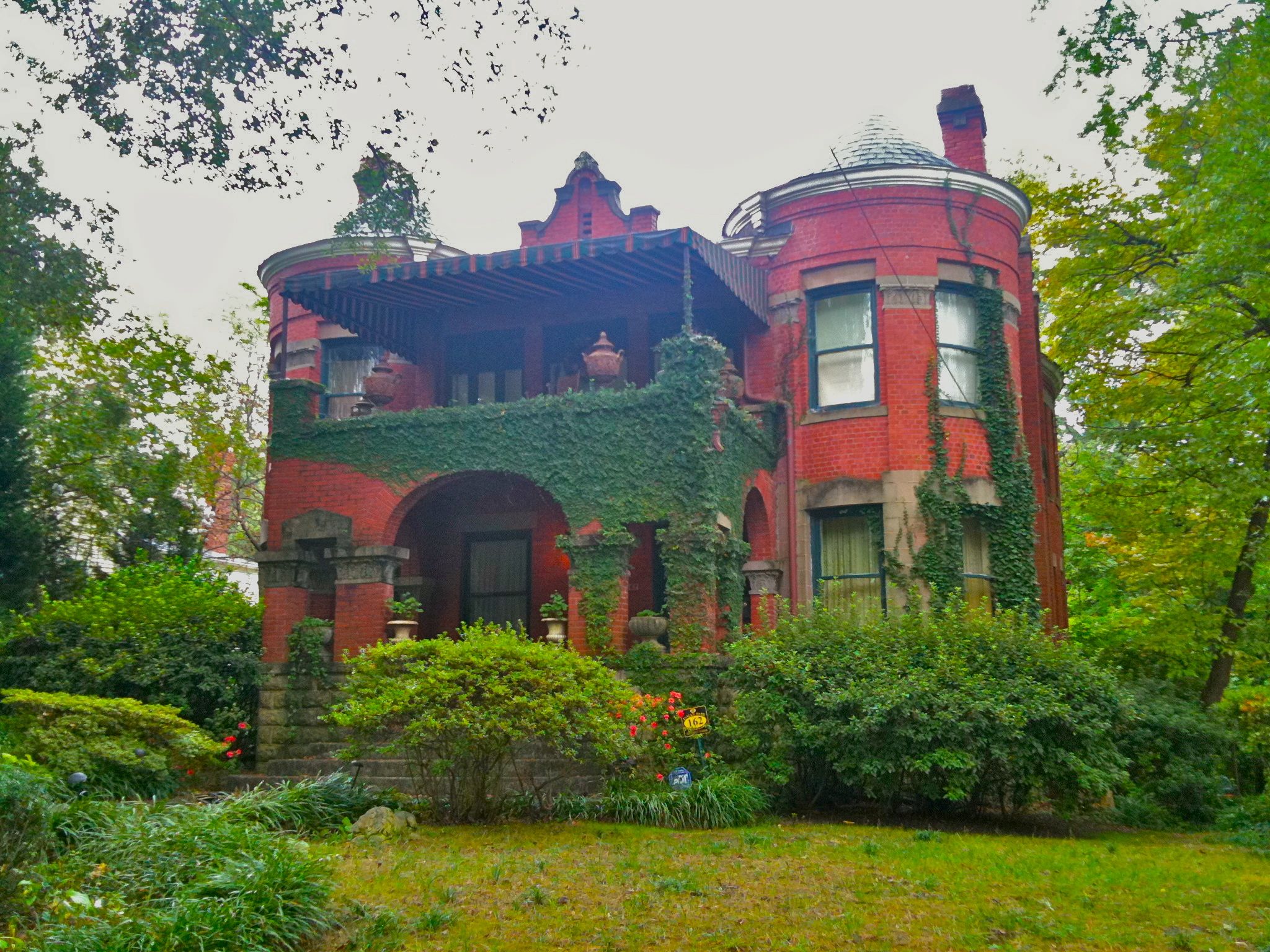
Housing: Housing ranges from Victorian mansions to bungalows, intermixed with apartments and condominiums.
History: In the late 1880s, Inman Park was Atlanta’s first planned residential suburb and the first located on Atlanta’s electric streetcar line.
Parks: One of the largest city parks in Atlanta, Freedom Park stretches from the Downtown Connector to the Carter Center. A key feature of the park is its public art, like the Homage to King, a portrait of Martin Luther King, Jr.
Activities: You can check out street art at Krog Street Tunnel or visit Krog Street Market, a food hall and market. Every year, the popular Inman Park Festival and Tour of Homes offers a self-guided tour of old Victorian homes and beautiful remodeling jobs.
Dining: Known for its hip food scene, Inman Park is home to a number of popular restaurants off North Highland Avenue, such as BeetleCat, Barcelona Wine Bar, MF Sushi, and Sotto Sotto.
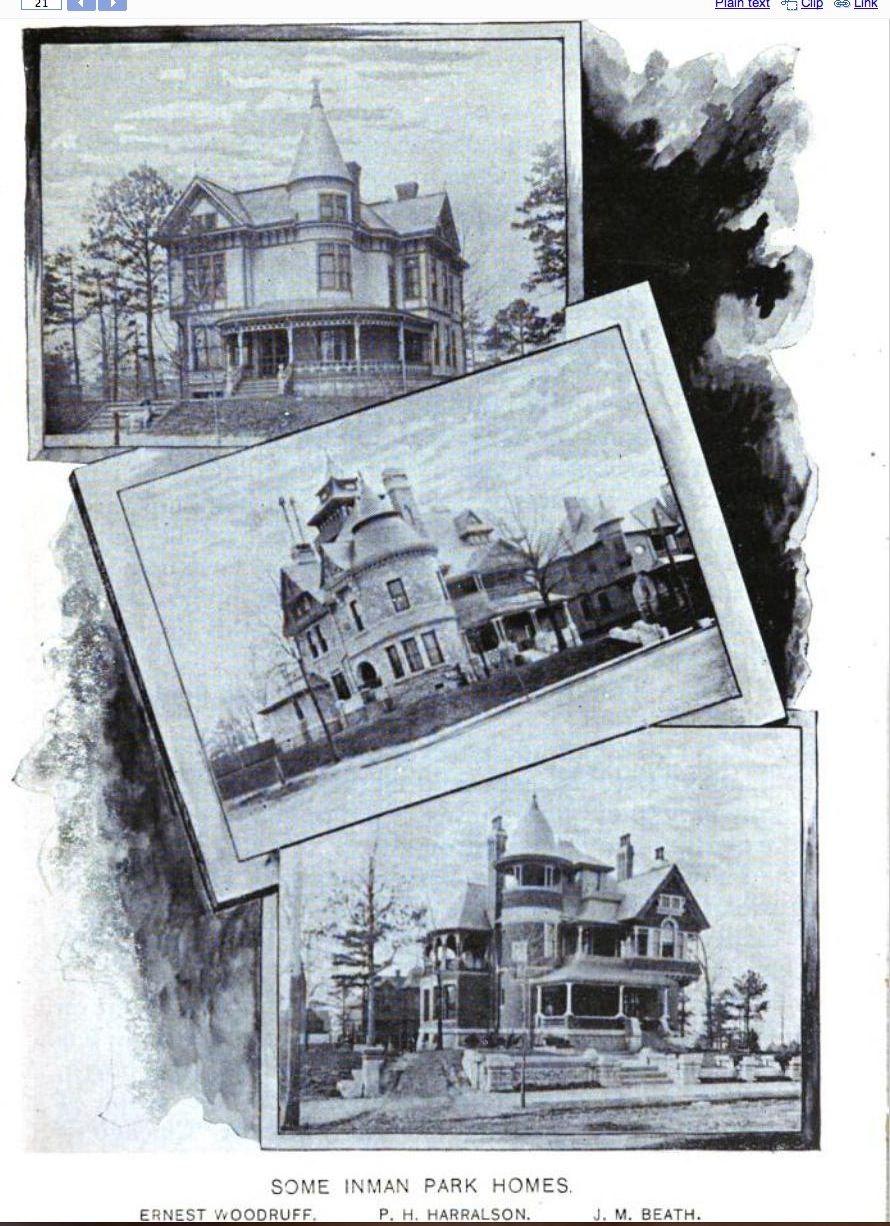
Inman Park Houses. Photo: Margaret Severance / Public domain
Inman Park Houses. Photo: Margaret Severance / Public domain
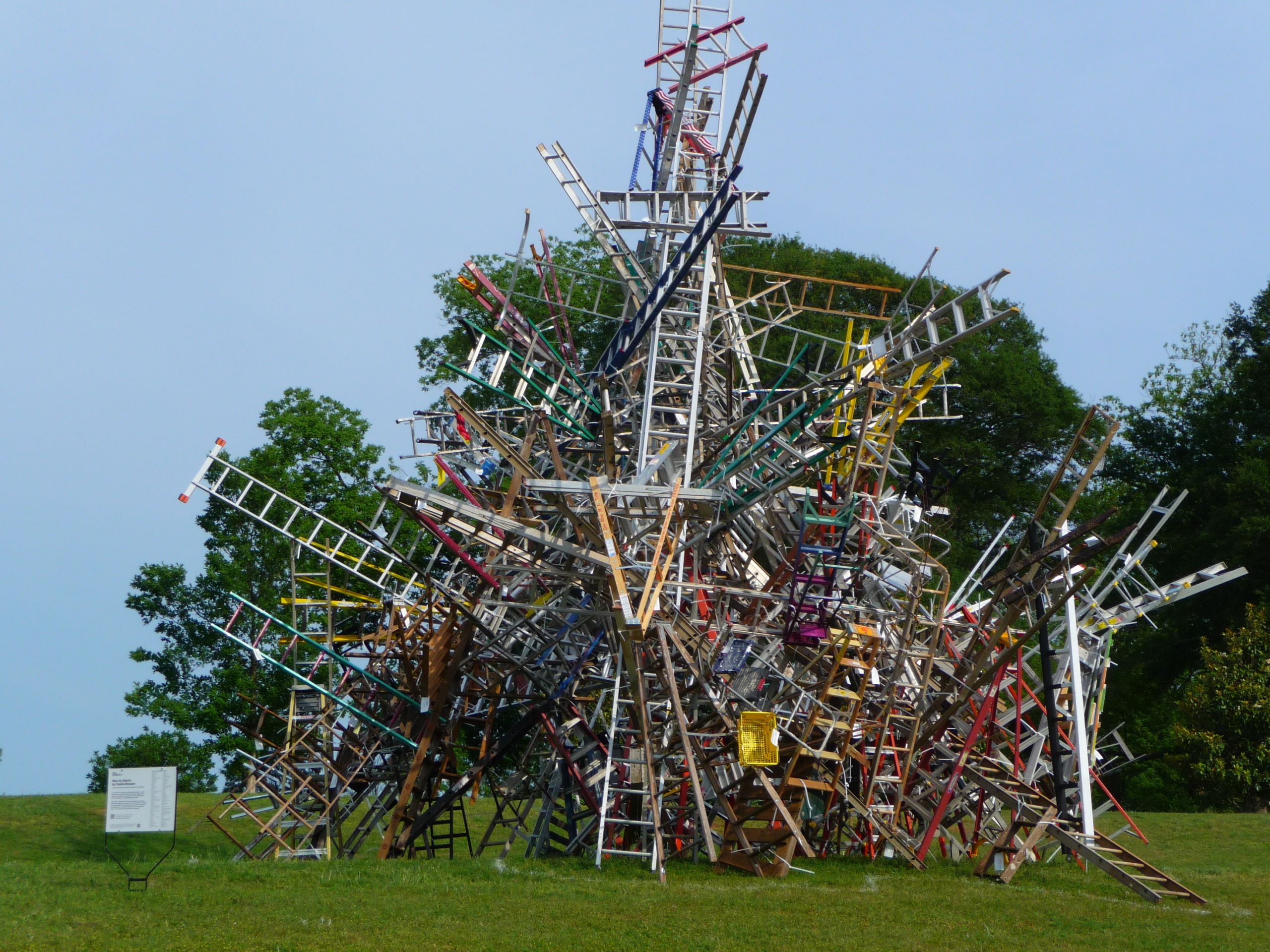
Rise Up Atlanta, artwork by Charlie Brouwer, in Freedom Park. Photo: Daniel Mayer / CC BY-SA (https://creativecommons.org/licenses/by-sa/3.0)
Rise Up Atlanta, artwork by Charlie Brouwer, in Freedom Park. Photo: Daniel Mayer / CC BY-SA (https://creativecommons.org/licenses/by-sa/3.0)

Krog Street Tunnel. Photo: Lee Coursey / CC BY (https://creativecommons.org/licenses/by/2.0)
Krog Street Tunnel. Photo: Lee Coursey / CC BY (https://creativecommons.org/licenses/by/2.0)
Kirkwood
Located about 5 miles from downtown Atlanta and 4 miles from Emory, Kirkwood is a national historic designated neighborhood on the east side of Atlanta.
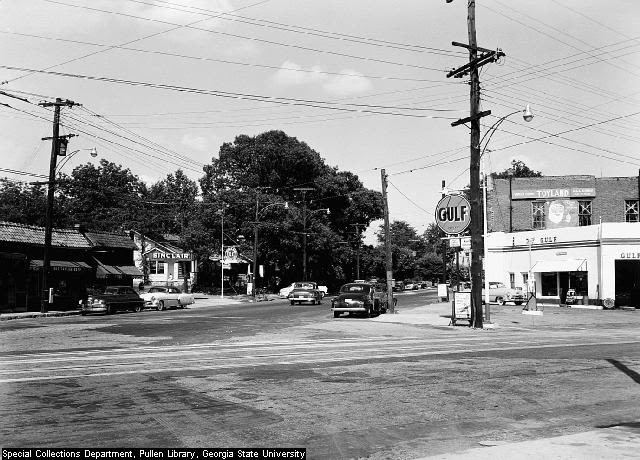
Housing: Kirkwood offers architecture in the Queen Anne, East Lake, Arts and Crafts, and Victorian Folk styles.
History: A historic streetcar suburb designed by architect Will Saunders, the neighborhood is named after prominent early landholders, the Kirkpatrick and Dunwoody families. Five historic markers can be found in Kirkwood detailing major events during the Civil War’s Battle of Atlanta.
Parks:
· Gilliam Park & Urban Gardens includes green space, bike trails, and a community garden.
· Bessie Branham Park features tennis and basketball courts, a baseball field, a playground, and a recreation center.
· Kirkwood Urban Forest and Community Garden was formed by community members who transformed 7 acres of neglected land into a park and community garden with nature trails and a meadow area.
Activities: The annual Kirkwood Spring Fling features live music, food, and an artist’s market. Or, you can mark your calendars for the annual Wine Stroll and Home for the Holidays events.
Dining: Kirkwood offers a full array of dining options. Notable restaurants include Urban Pie, The Pullman, Sun in My Belly, Ration and Dram, and Kirkyard Public House.
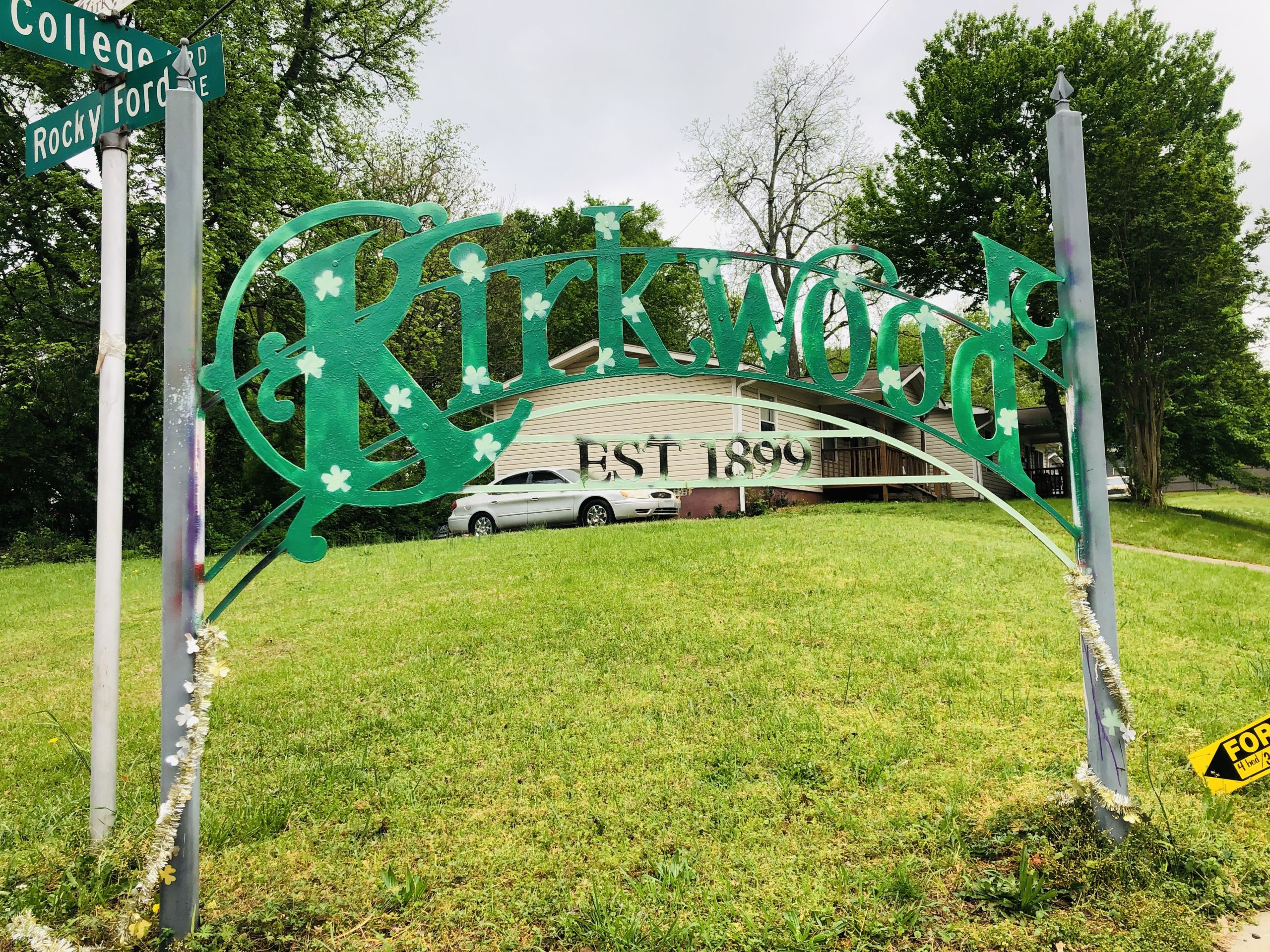
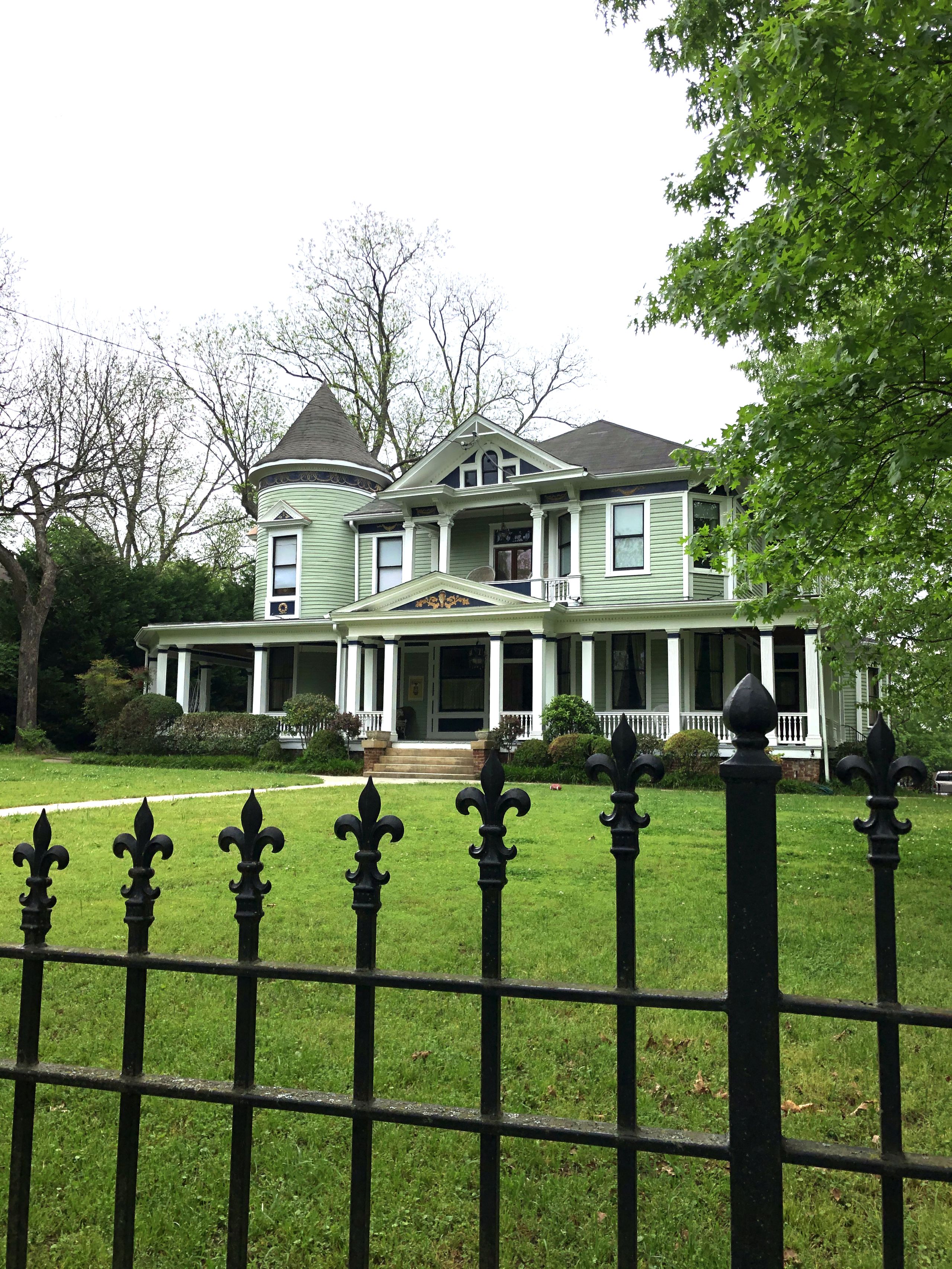
Midtown Atlanta
Located just north of downtown and almost 5 miles from Emory, Midtown Atlanta is a high-density commercial and residential neighborhood.
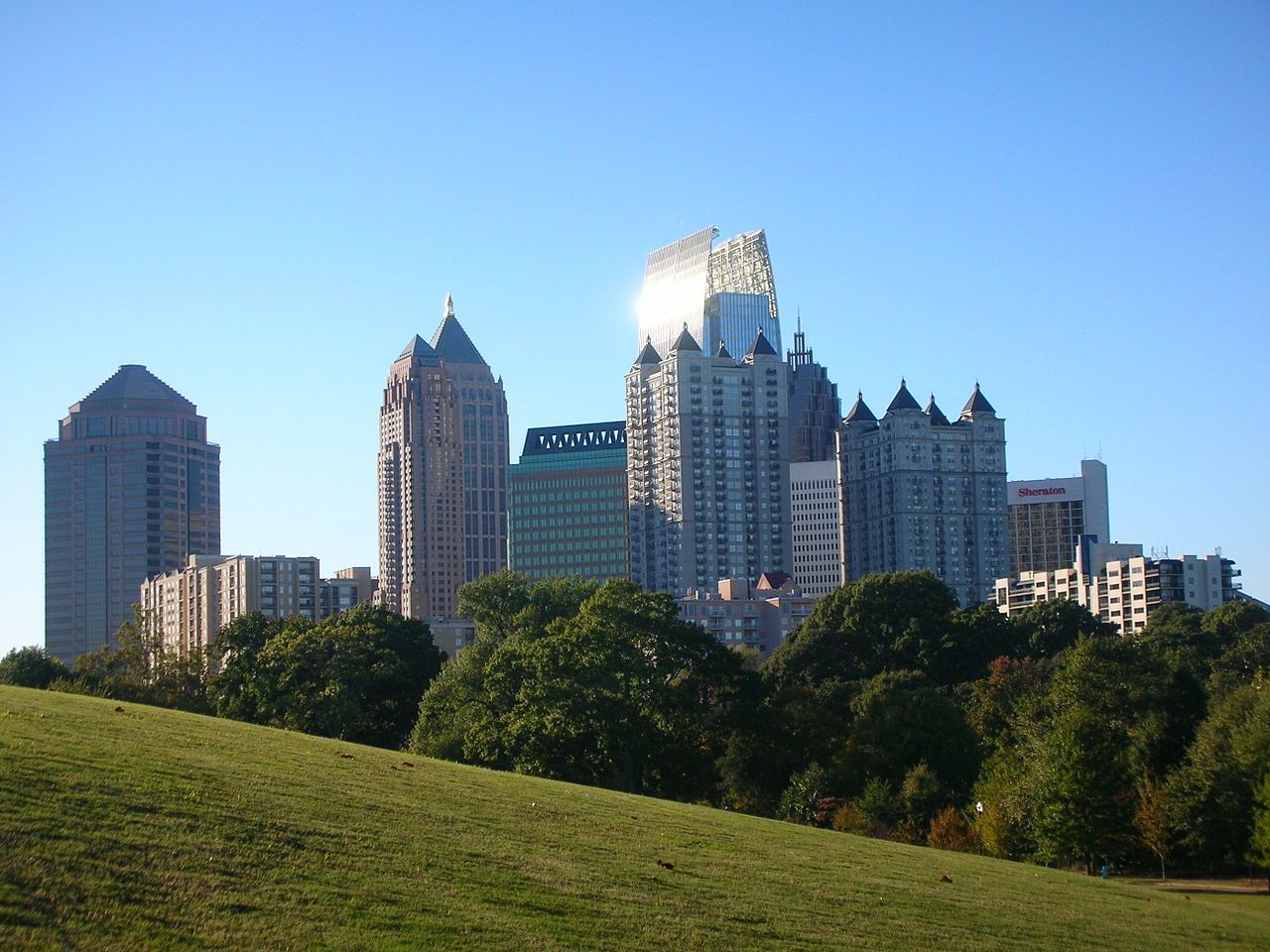
Buildings: Midtown is comprised of high-rise office buildings and condominiums, hotels, high-end retail shops, and the southeast’s largest art museum, many of them located along Atlanta’s famed Peachtree Street.
History: In the late 1800s, this area was considered one of Atlanta’s finest neighborhoods, but after World War II many people left the area for suburbs. The Midtown Alliance has been the force behind the successful revitalization of the area to the vibrancy it’s known for today.
Parks: Piedmont Park is a sprawling, urban park that spans 185 acres. It’s great for running, walking, biking, and picnics. Its facilities include soccer fields, softball fields, tennis courts, and beach volleyball courts. It hosts a Saturday farmers market, as well as a number of music festivals and events throughout the year.
Activities: Known as the “Heart of the Arts,” Midtown is home to the Fox Theatre, Woodruff Arts Center (High Museum of Art, Alliance Theatre, and Atlanta Symphony Orchestra), Atlanta Botanical Garden, and Center for Puppetry Arts. Among its many festivals are the Atlanta Dogwood Festival, an arts and craft festival with live music and food fair held in the spring at Piedmont Park, and Music Midtown, a two-day concert held each September.
Dining: The numerous restaurants in Midtown offer a wide range of cuisine, from burgers to fine dining. Notable restaurants include 5Church Atlanta, Henry’s Midtown Tavern, The Nook on Piedmont Park, Ecco, South City Kitchen, Café Agora Midtown, and Nan Thai Fine Dining.

Peachtreet Street circa 1882. Photo: Unknown author / Public domain
Peachtreet Street circa 1882. Photo: Unknown author / Public domain
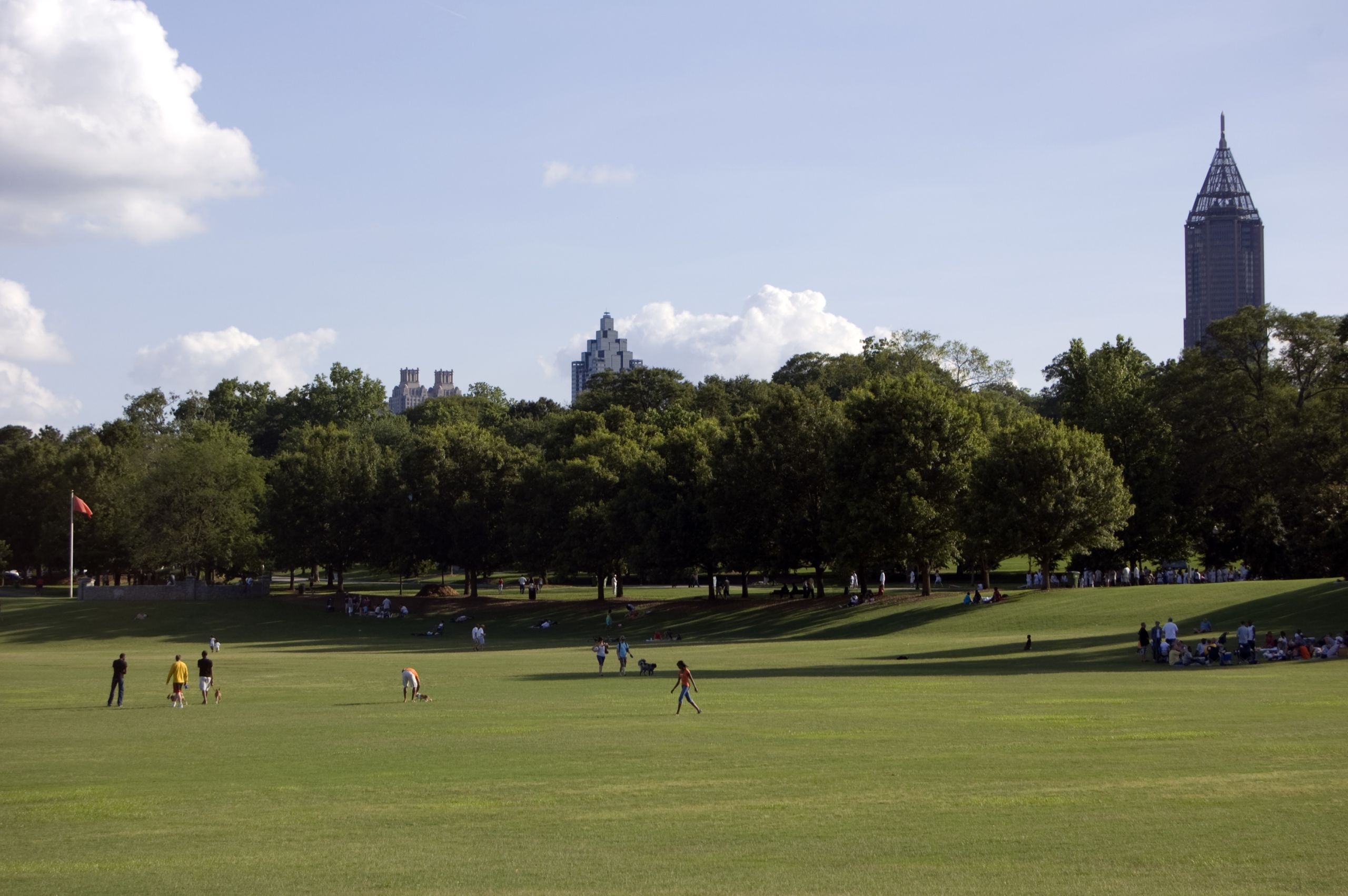
Piedmont Park. Photo: Goingstuckey / CC BY-SA (https://creativecommons.org/licenses/by-sa/3.0)
Piedmont Park. Photo: Goingstuckey / CC BY-SA (https://creativecommons.org/licenses/by-sa/3.0)
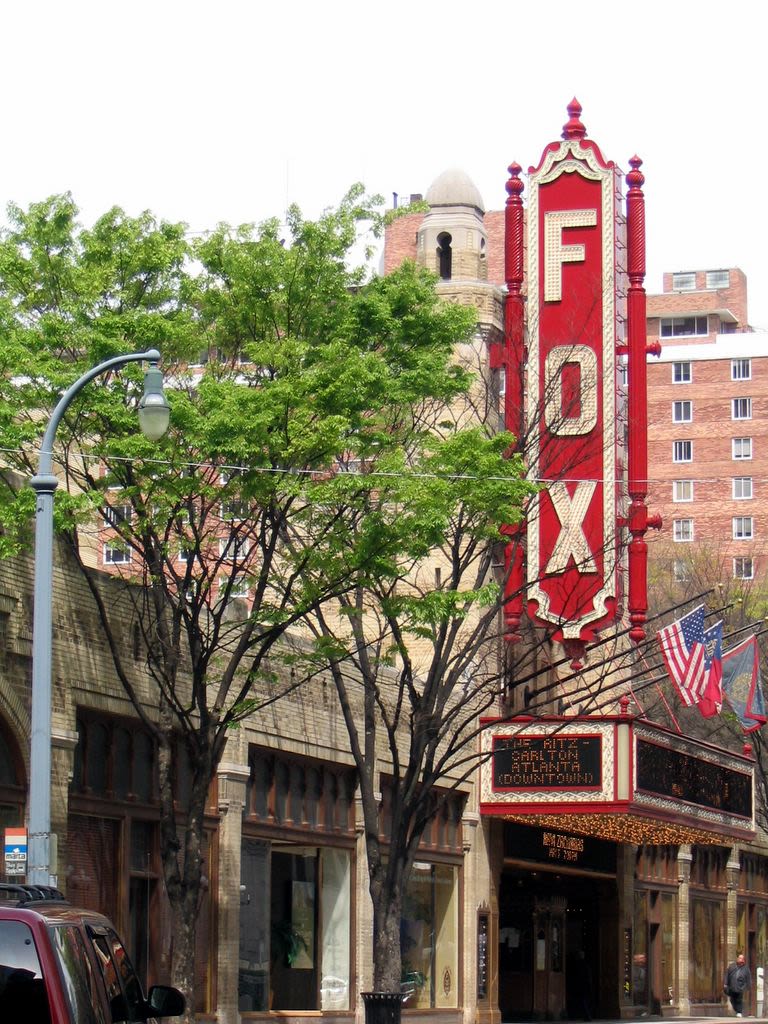
Fox Theater. Photo: Lee Coursey / CC BY (https://creativecommons.org/licenses/by/2.0)
Fox Theater. Photo: Lee Coursey / CC BY (https://creativecommons.org/licenses/by/2.0)
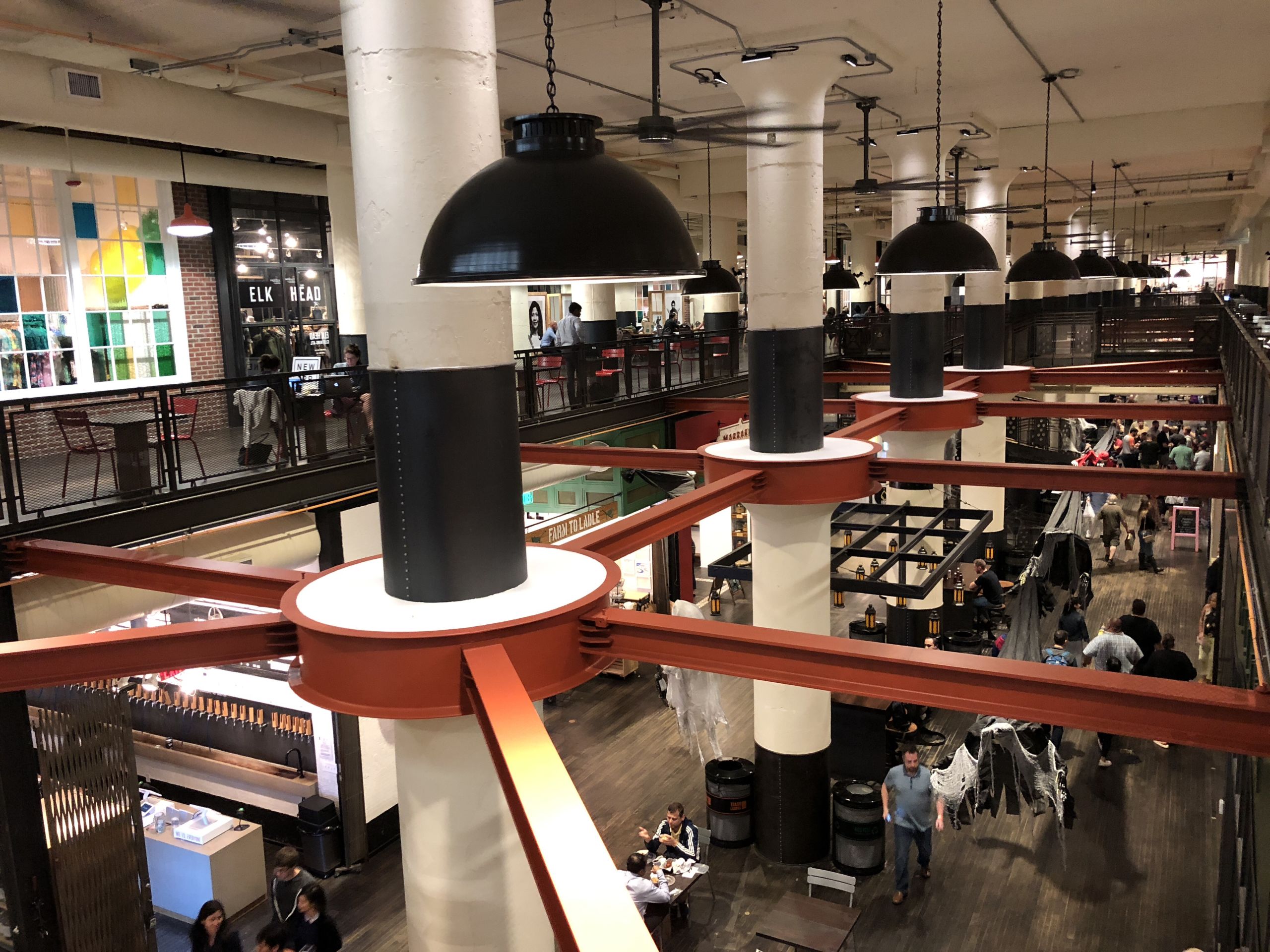
Ponce City Market food hall from above. Photo: Tim Farley / CC BY-SA (https://creativecommons.org/licenses/by-sa/4.0)
Ponce City Market food hall from above. Photo: Tim Farley / CC BY-SA (https://creativecommons.org/licenses/by-sa/4.0)
Morningside
Located about 5 miles from downtown Atlanta and just over 2.5 miles from Emory University, Morningside is a mix of urban and suburban characteristics.
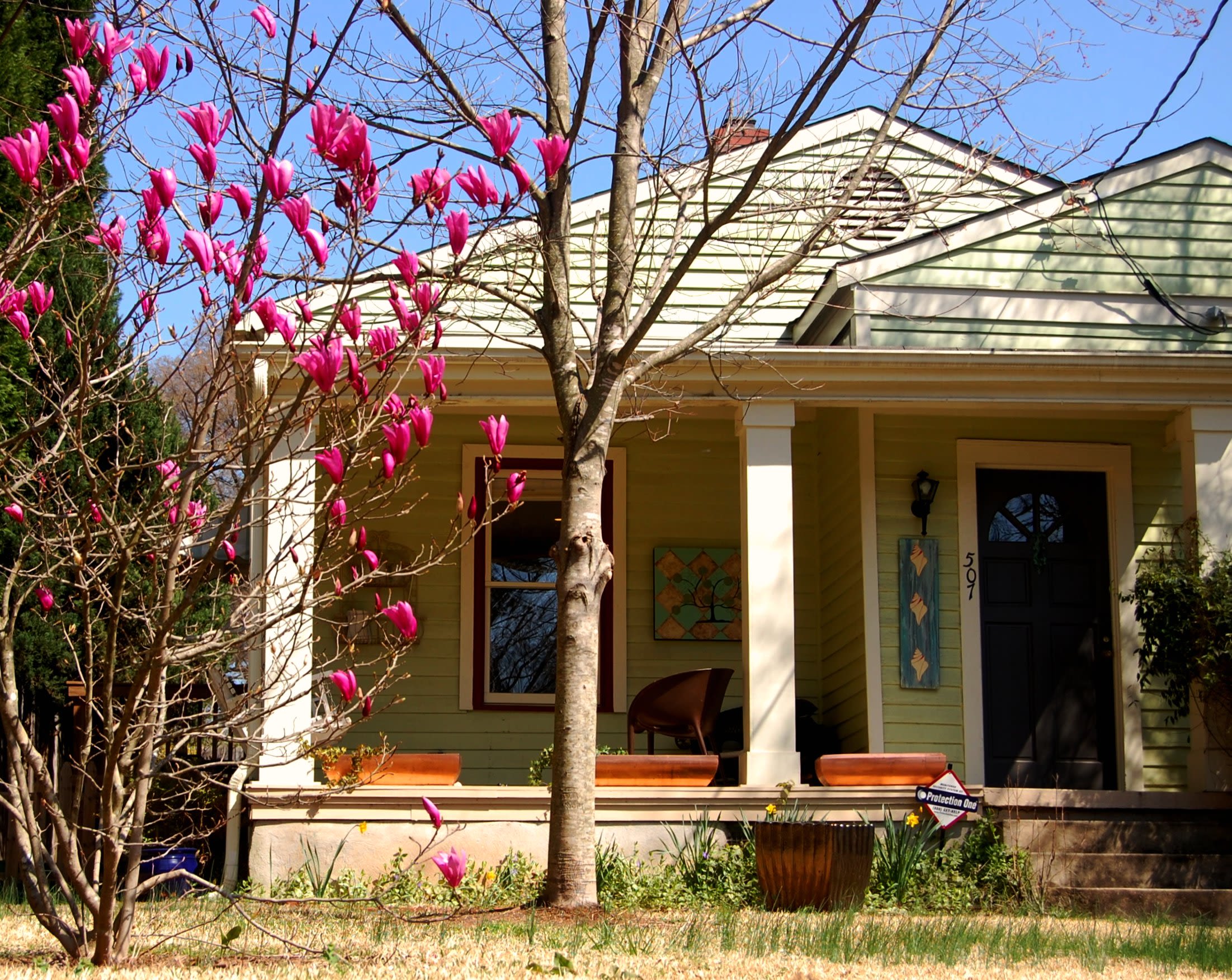
Housing: This residential community has beautiful Craftsman and Tudor style homes.
History: This location was once home to the Creek Indians. In the 1820s, the area was a farming community where settlers grew cotton and corn.
Parks:
· Noble Park contains an impressive large black gum tree that is over 8 feet in circumference and 73 feet tall, with a canopy that has an 80-foot spread.
· Sunken Garden Park contains a beautiful formal rose garden and mature trees that offer shade for the playground.
· Herbert Taylor Park is a 40-acre nature preserve with a path that winds through the park.
· Morningside Nature Preserve contains a one-mile hiking loop that winds through the woods.
Activities: Every Saturday morning, you can visit the Morningside Farmer’s Market for organic produce, artisan crafts, locally produced meats, chef demonstrations, and book signings.
Dining: Morningside has a small commercial district with a number of intimate restaurants, bars, and coffee shops. Notables include Alon’s Bakery and Market, Doc Chey’s Noodle House, Fat Matt’s Rib Shack, Whiskey Bird, and The Family Dog.
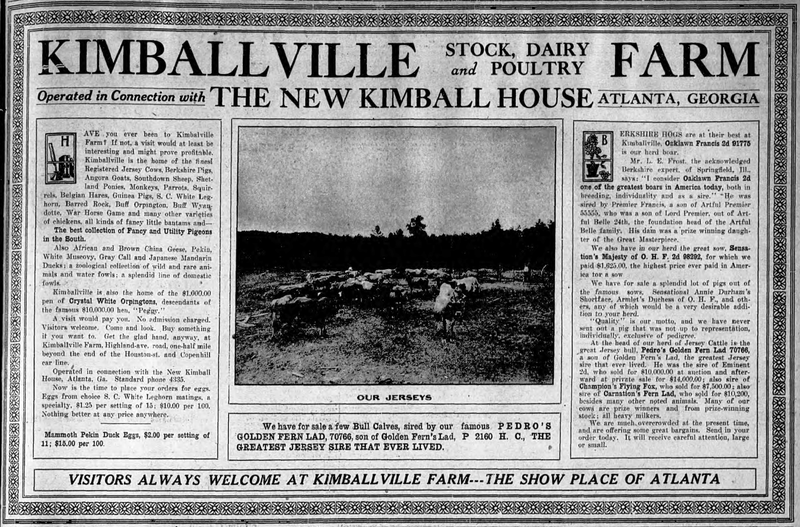
Kimballville Farm ad. Photo: Unknown author / Public domain
Kimballville Farm ad. Photo: Unknown author / Public domain
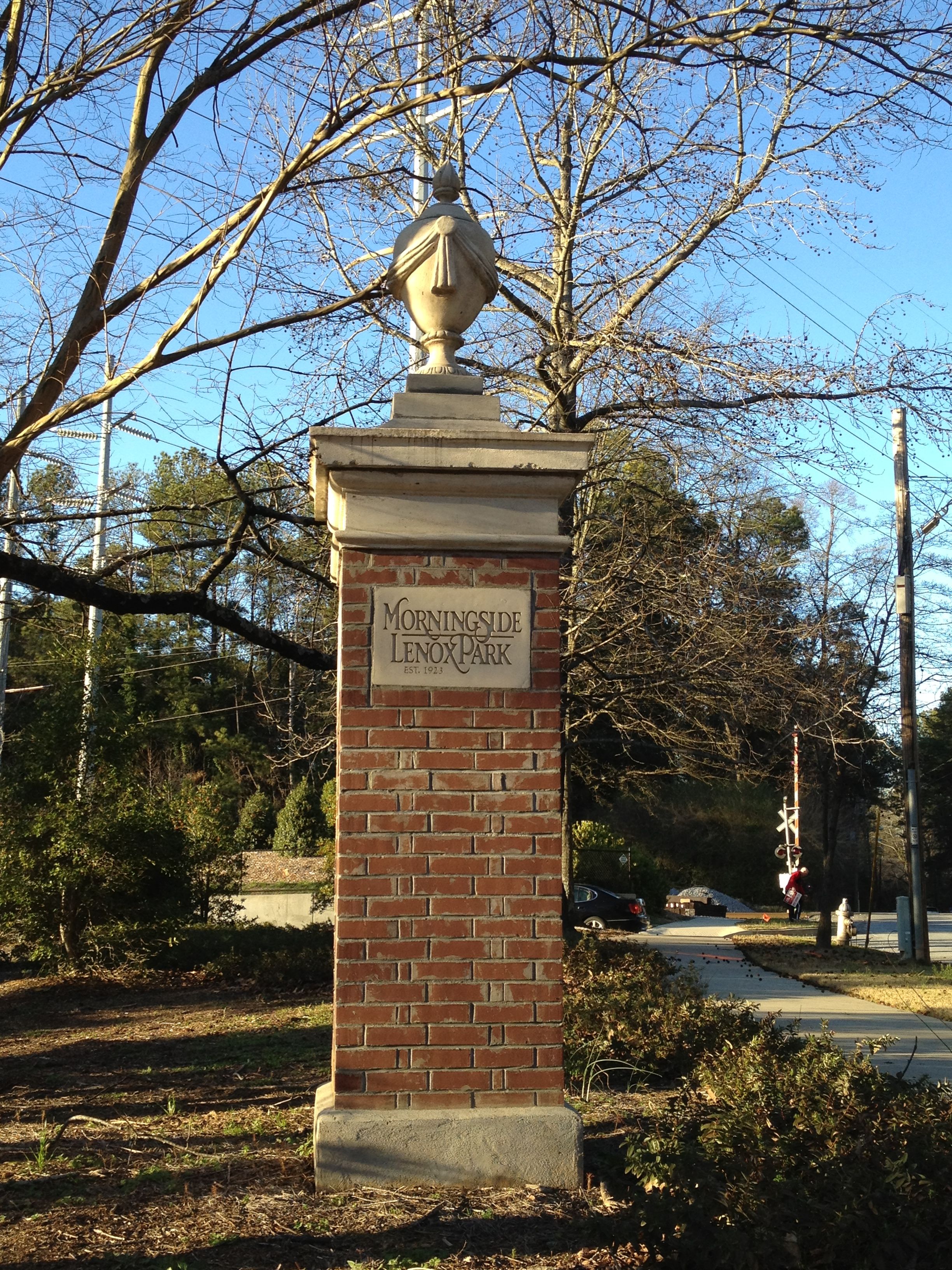
Morningside column. Photo: Keizers / CC BY-SA (https://creativecommons.org/licenses/by-sa/3.0)
Morningside column. Photo: Keizers / CC BY-SA (https://creativecommons.org/licenses/by-sa/3.0)
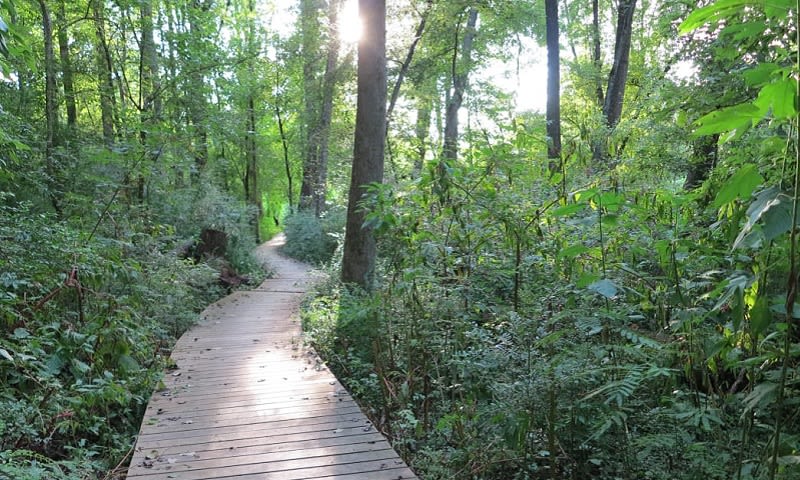
Morningside Nature Preserve. Photo: Jim Hodgson, atlanta.net.
Morningside Nature Preserve. Photo: Jim Hodgson, atlanta.net.
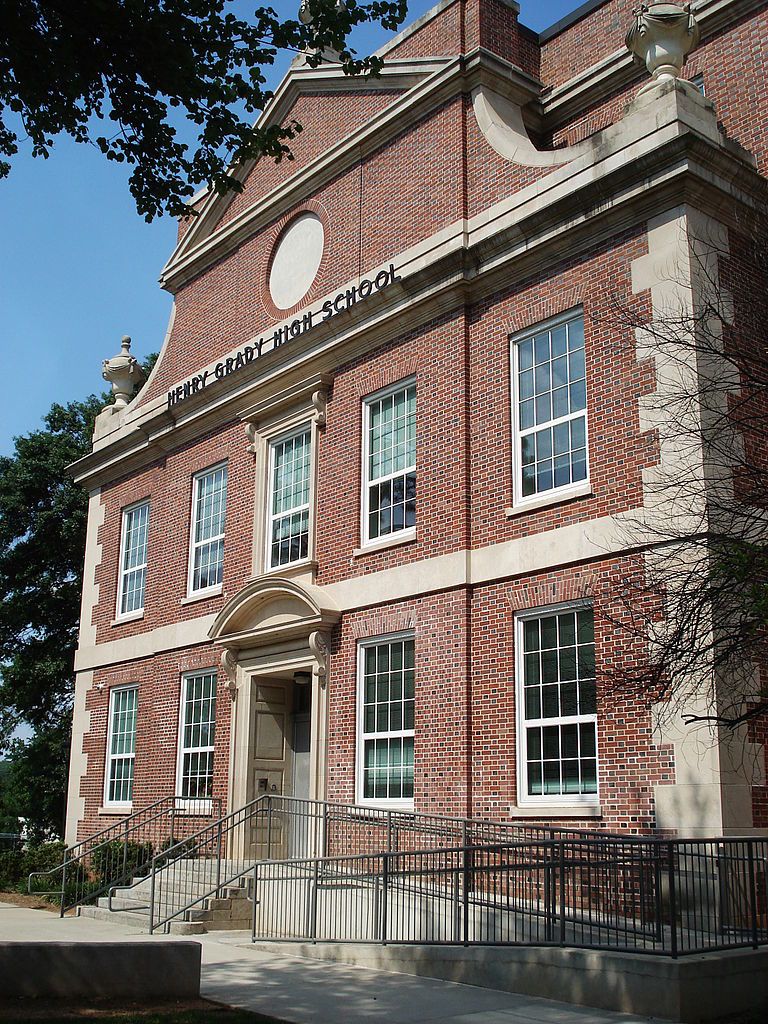
Grady High School. Photo: Atlantacitizen at en.wikipedia / Public domain
Grady High School. Photo: Atlantacitizen at en.wikipedia / Public domain
Sweet Auburn
Located just east of downtown Atlanta and 6 miles from Emory, the Sweet Auburn Historic District is concentrated along a short mile and a half stretch of Auburn Avenue, and reflects the history, heritage, and achievements of Atlanta's African American community.
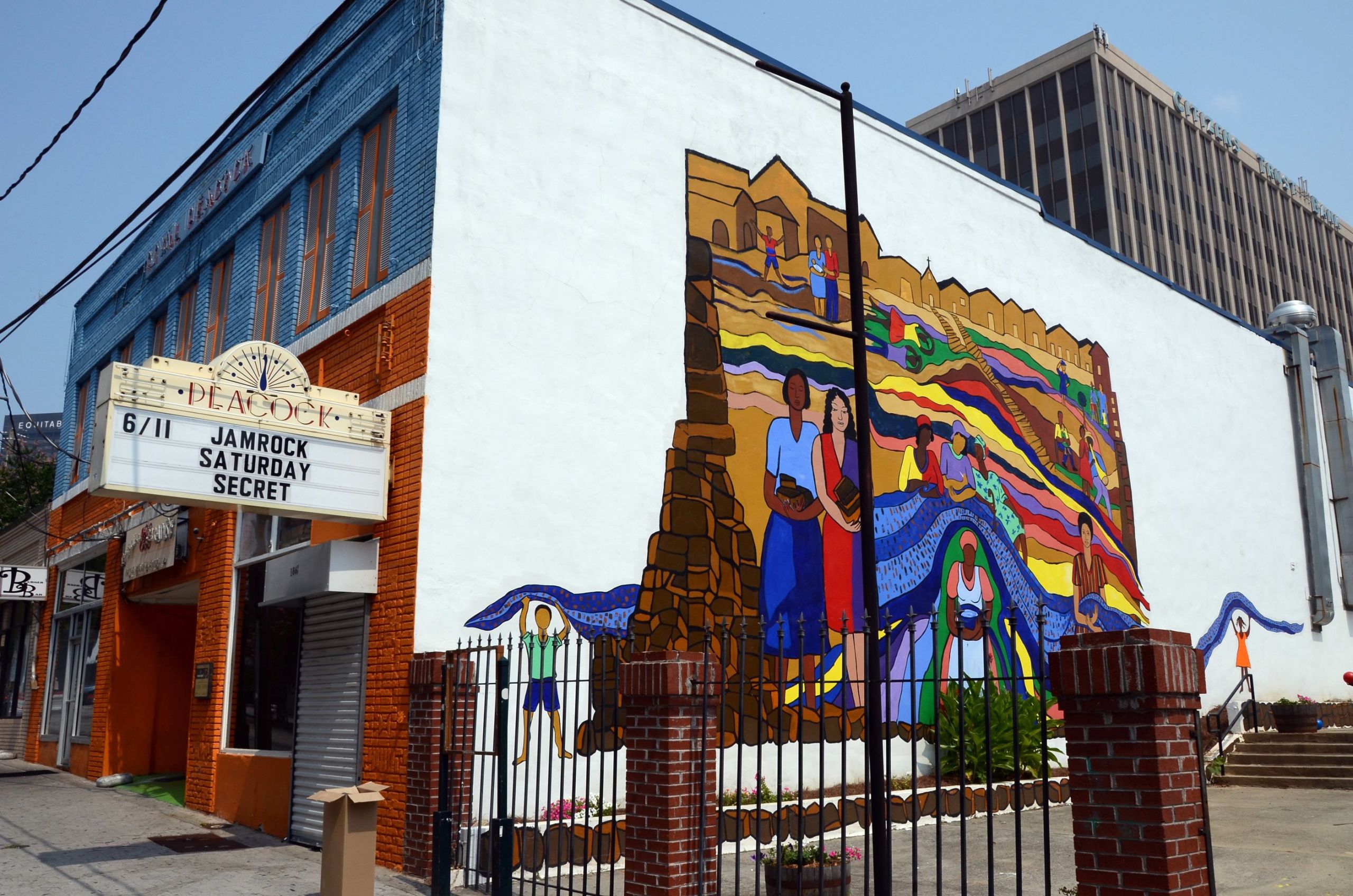
History: In the 1940s and 50s, Sweet Auburn flourished economically with scores of African American-owned businesses, newspapers, churches, and nightclubs. This neighborhood was designated a National Historic Landmark District in 1976, and it is significant for its history and development as a segregated area under Georgia’s Jim Crow laws.
Activities: The neighborhood includes a number of historic churches and businesses, such as:
· Dr. Martin Luther King’s birth home
· Martin Luther King Jr. National Park Visitors’ Center
· Odd Fellows Building and Auditorium
Founded by civil rights leader Hosea Williams, the Sweet Auburn Heritage Festival is held every fall on Auburn Avenue. Sweet Auburn is also one of the best places in the city to celebrate Black History Month; each February, there is a parade and the neighborhood’s history is celebrated with performances and guest speakers.
Dining: The Sweet Auburn Curb Market opened in 1924. It houses thirty local businesses, offering fresh meats, fish, produce, and eateries. You can also visit Sweet Auburn Seafood for southern-style seafood.
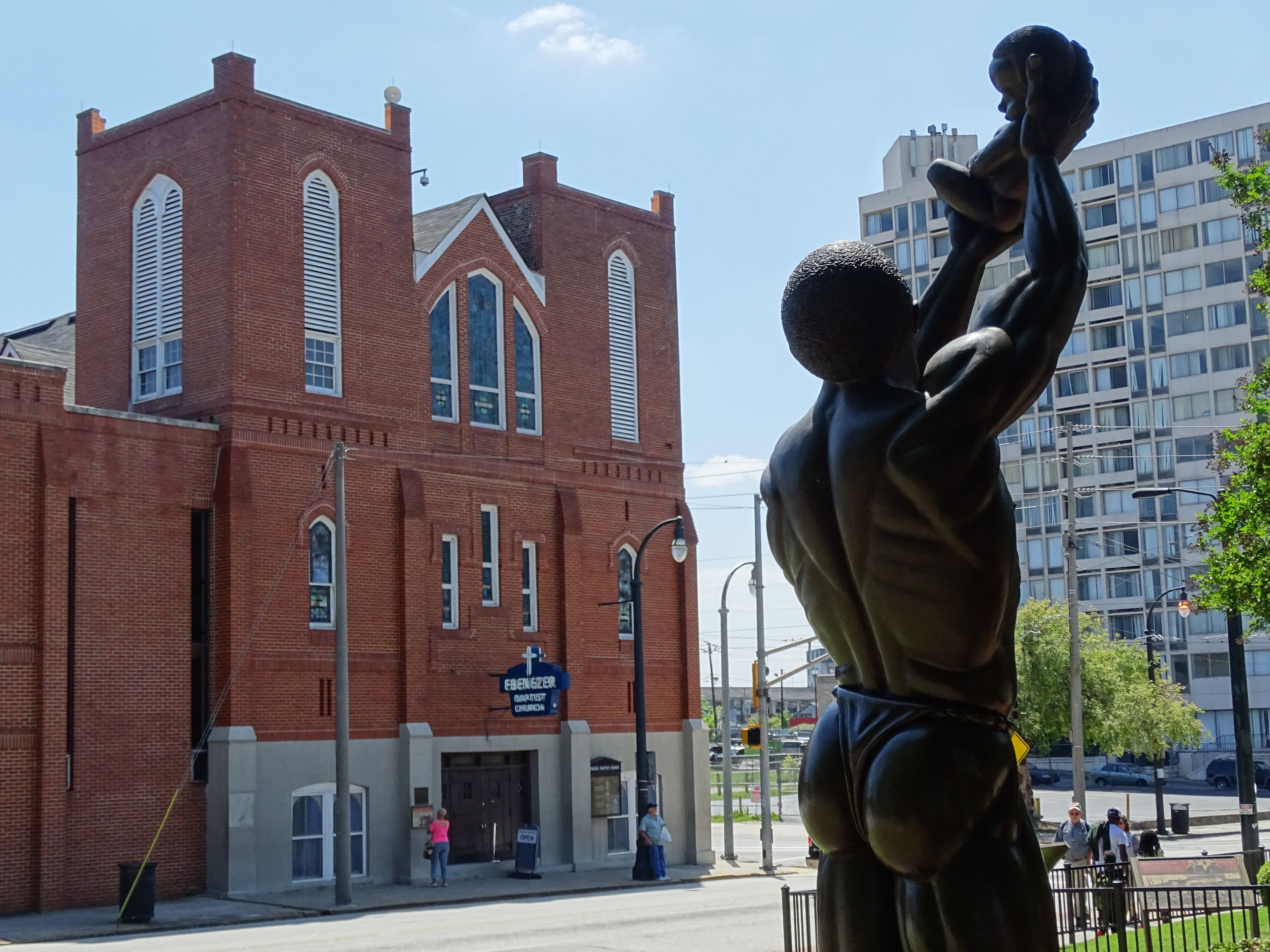
Ebenezer Baptist Church. Photo: Adam Jones. https://flic.kr/p/UfdGAa. https://creativecommons.org/licenses/by-sa/2.0/
Ebenezer Baptist Church. Photo: Adam Jones. https://flic.kr/p/UfdGAa. https://creativecommons.org/licenses/by-sa/2.0/
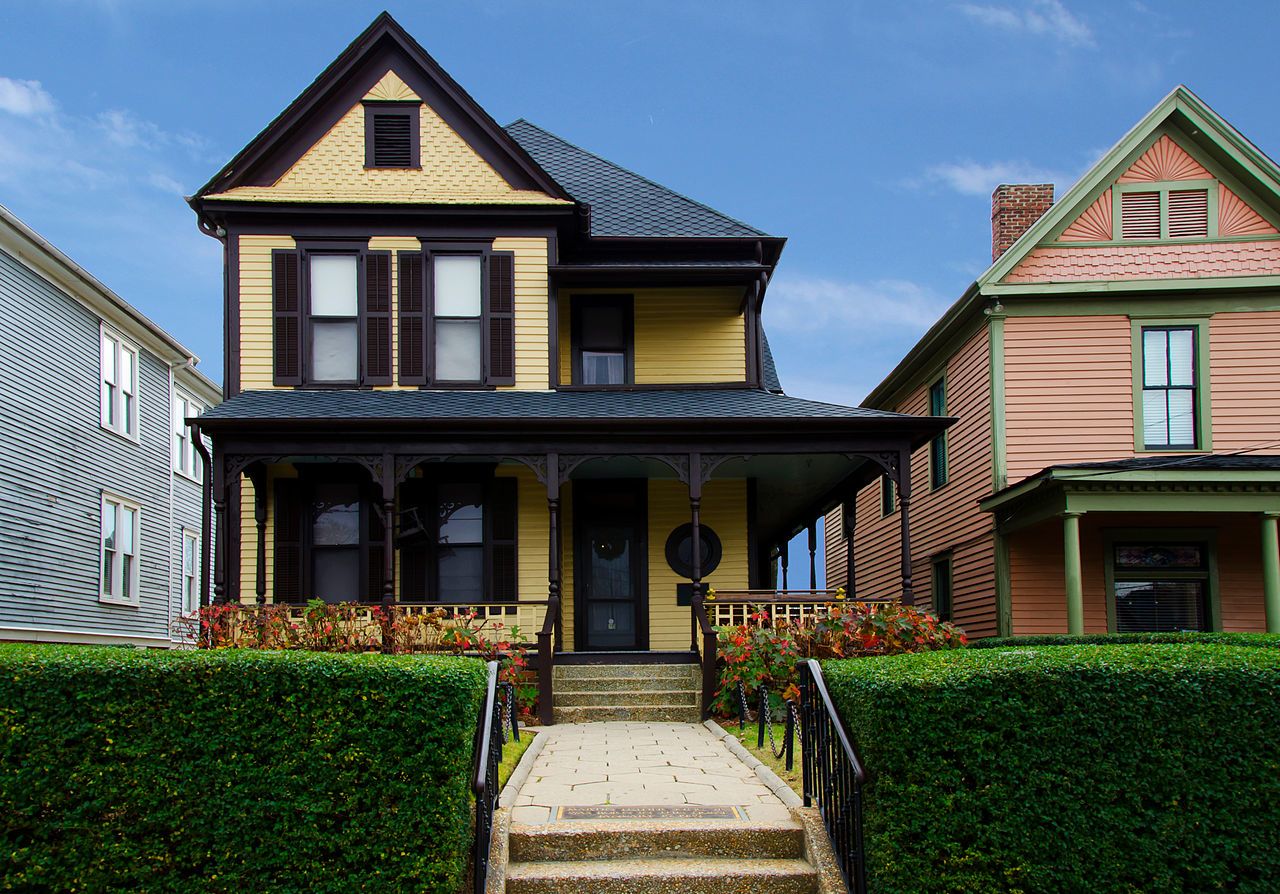
Martin Luther King's boyhood home. Photo: https://commons.wikimedia.org/wiki/File:Martin_Luther_King%27s_Boyhood_Home.jpg
Martin Luther King's boyhood home. Photo: https://commons.wikimedia.org/wiki/File:Martin_Luther_King%27s_Boyhood_Home.jpg
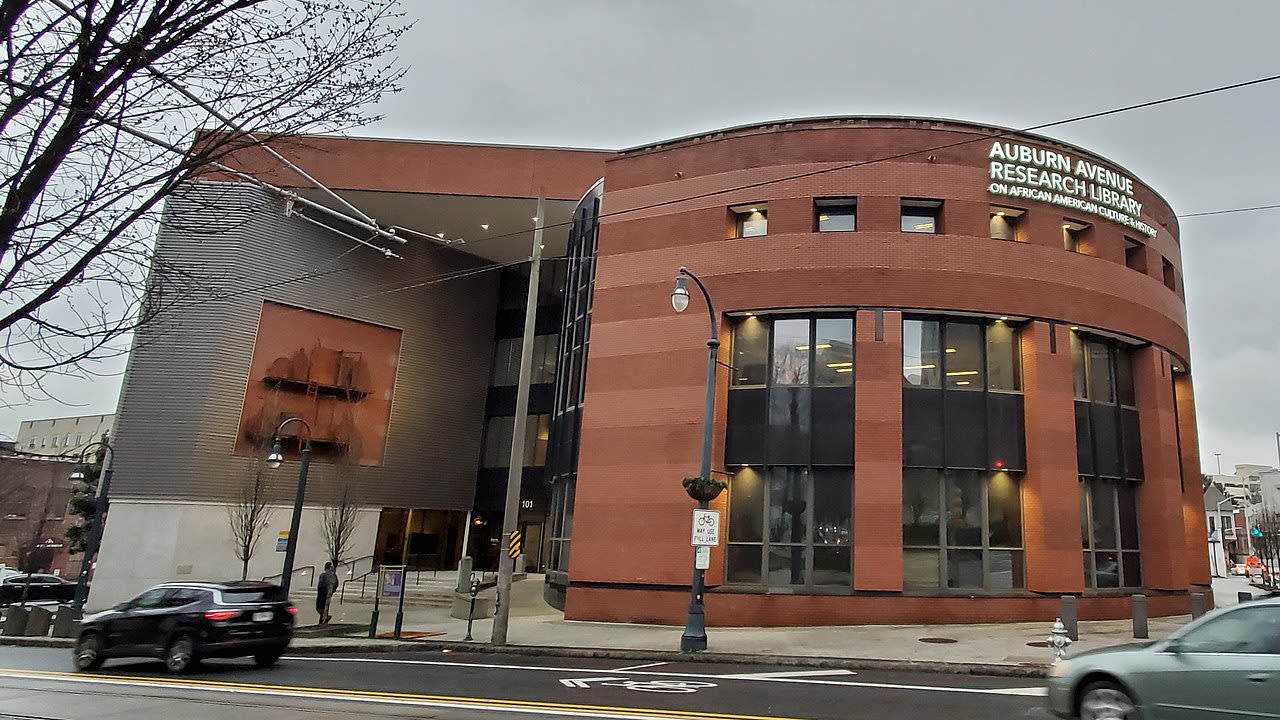
Auburn Avenue Research Library. Photo: JJonahJackalope / CC BY-SA (https://creativecommons.org/licenses/by-sa/4.0)
Auburn Avenue Research Library. Photo: JJonahJackalope / CC BY-SA (https://creativecommons.org/licenses/by-sa/4.0)
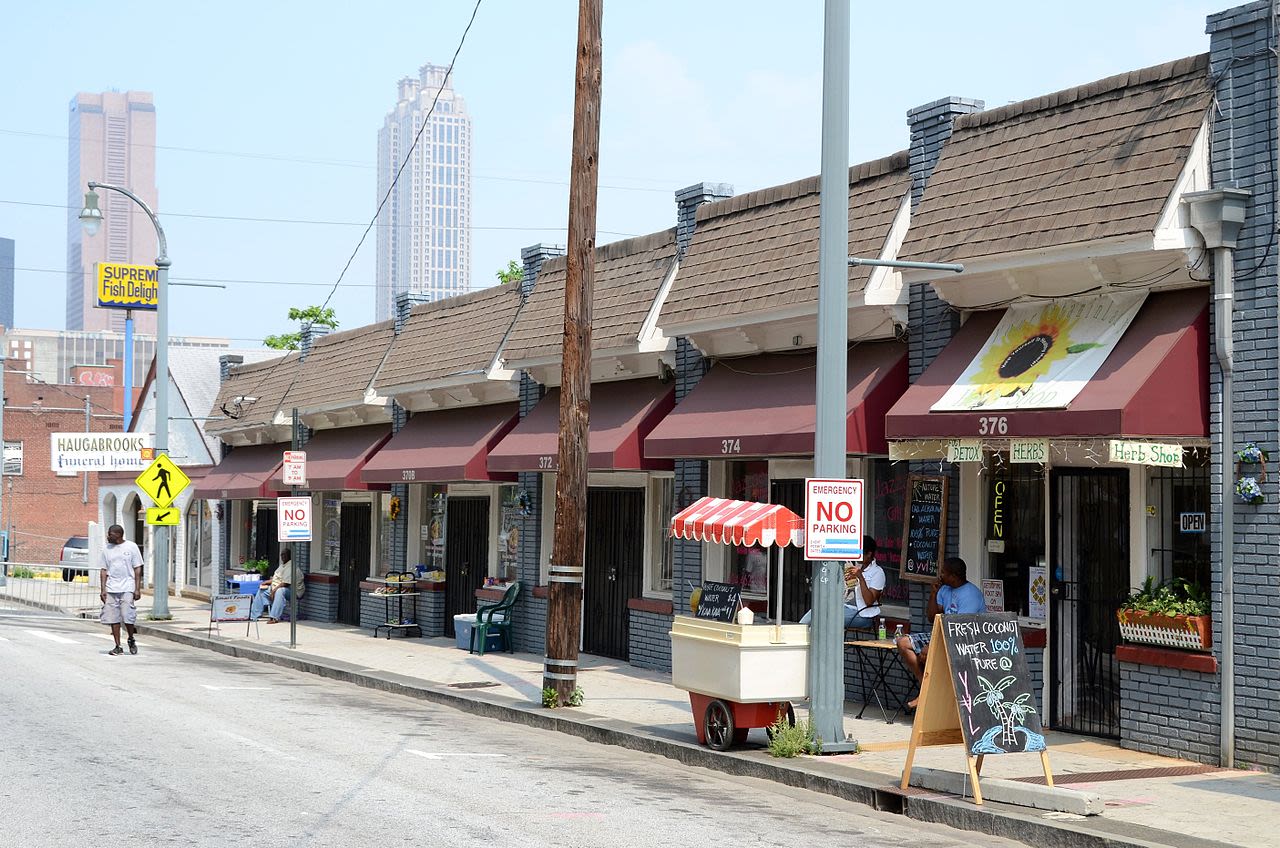
Sweet Auburn Curb Market. Photo: Tim / CC BY (https://creativecommons.org/licenses/by/2.0)
Sweet Auburn Curb Market. Photo: Tim / CC BY (https://creativecommons.org/licenses/by/2.0)
Virginia-Highland
Just 3 miles northeast of downtown Atlanta, this walkable neighborhood is about 3 miles from Emory University.
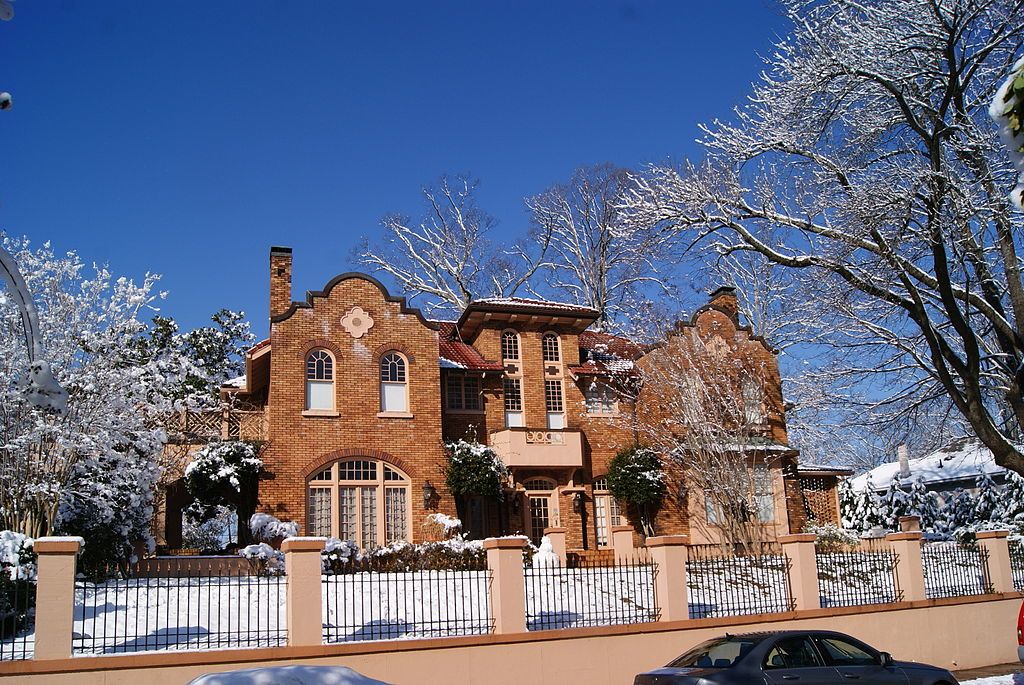
Housing: Known for its historic homes, Virginia-Highland offers many examples of Craftsman style bungalows built in the 1910s - 1930s.
History: The neighborhood is named after the intersection of Virginia Avenue and North Highland Avenue, where you can find a cluster of trendy shops, bars, and restaurants. Like other nearby neighborhoods, it was developed as a streetcar suburb.
Activities: At the center of this hip and happening neighborhood, you will find trendy boutique shops, restaurants and bars, as well as the popular Highland Woodworking and Intown Ace. You can also plan for SummerFest, an annual fundraiser with live music, art, and food or the Tour of Homes, a two-day event of neighborhood homes that highlights architecture and interior design.
Dining: Known for its vibrant bar and restaurant scene, notable neighborhood restaurants include Murphy’s, La Tavola, D.B.A Barbecue, Atkins Park, and Bookhouse Pub.
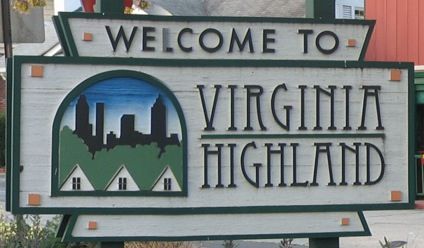
Virginia-Highland sign. Photo: Wikipedia user Jamarks / CC BY-SA (https://creativecommons.org/licenses/by-sa/3.0)
Virginia-Highland sign. Photo: Wikipedia user Jamarks / CC BY-SA (https://creativecommons.org/licenses/by-sa/3.0)

Briarcliff Hotel, now Briarcliff Summit Apartments. Photo: Keizers / CC BY-SA (https://creativecommons.org/licenses/by-sa/3.0)
Briarcliff Hotel, now Briarcliff Summit Apartments. Photo: Keizers / CC BY-SA (https://creativecommons.org/licenses/by-sa/3.0)
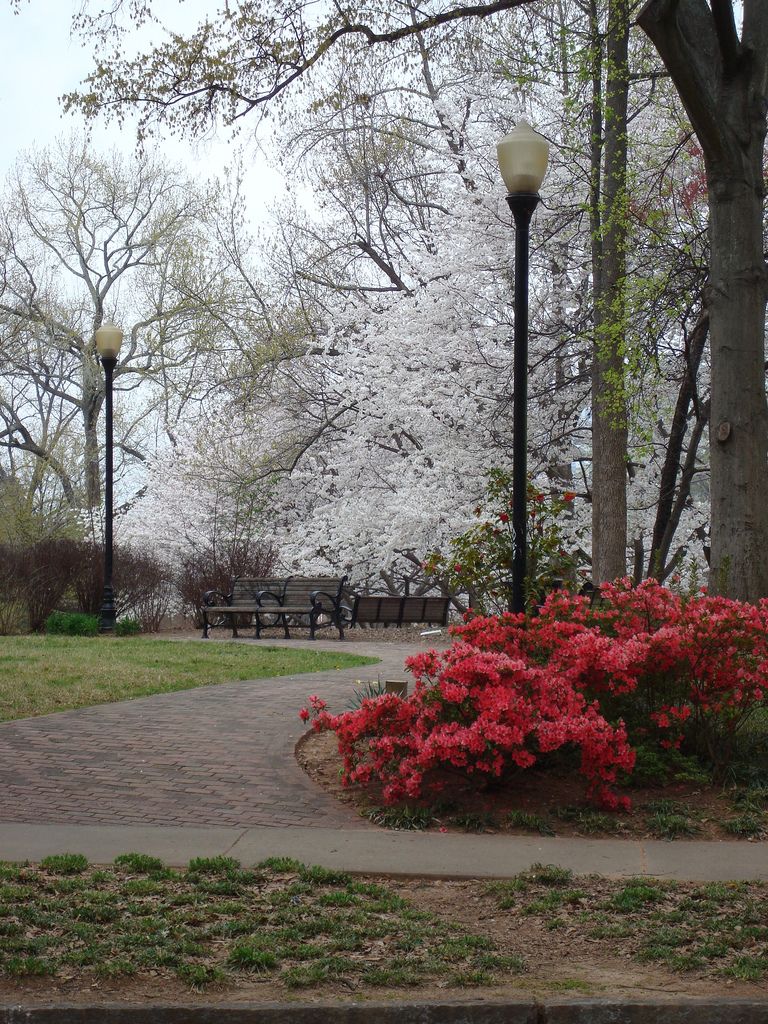
John Howell Memorial Park. Photo: Keizers / CC BY-SA (https://creativecommons.org/licenses/by-sa/3.0)
John Howell Memorial Park. Photo: Keizers / CC BY-SA (https://creativecommons.org/licenses/by-sa/3.0)
